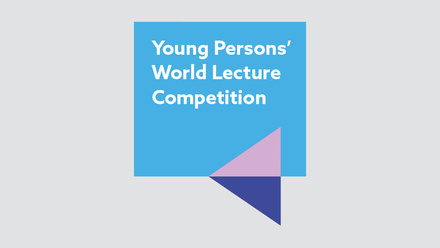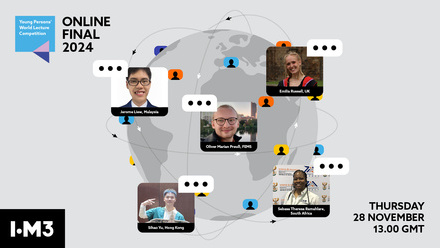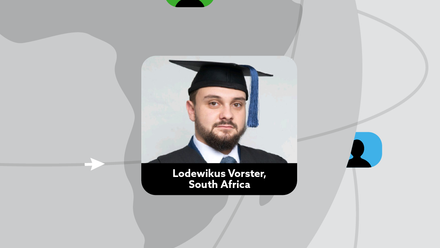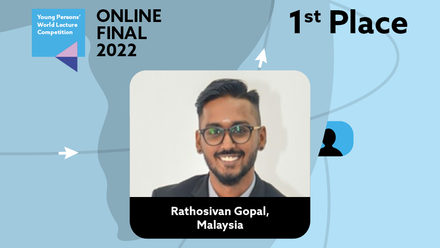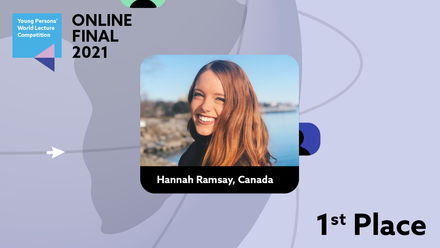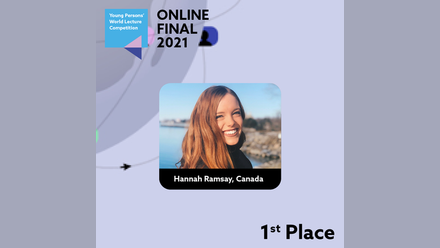The YPWLC finalists normally gather in the city where the final is to be held ahead of time, to have the opportunity to get to know each other and exchange experiences. They also have a programme of technical, cultural and social visits based around the competition, so that they get to know something of the country they are visiting and experience its culture and industry.
The IOM3 Young Persons' World Lecture Competition has been held annually in different locations around the globe since 2005. Past events have taken place in the UK, Malaysia, Singapore, the US, Brazil, Hong Kong and Australia.

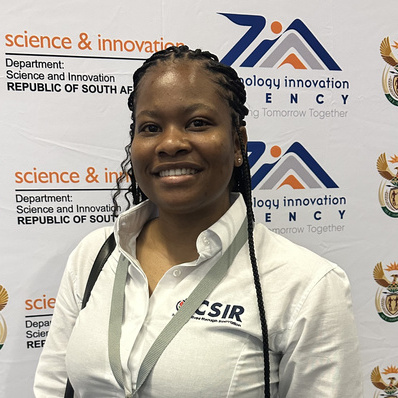
Winner - South Africa
Sebasa Theresa Ramahlare
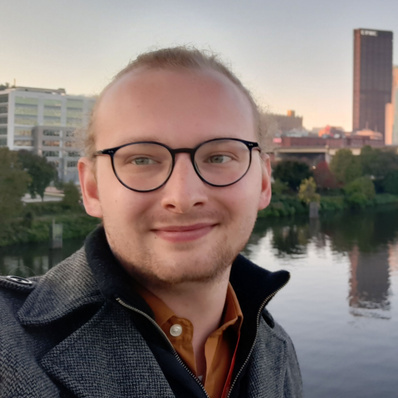
2nd Place - FEMS
Oliver Marian Preuß
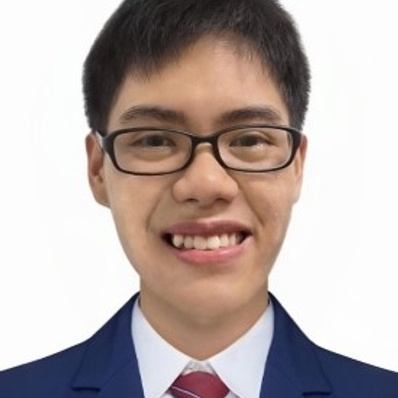
3rd Place - Malaysia
Jerome Liew
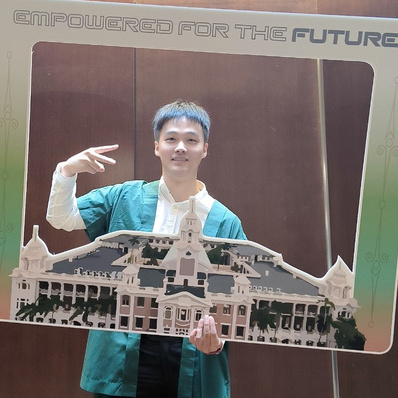
Hong Kong
Sihao Yu

Winner - South Africa
Sebasa Theresa Ramahlare
Sebasa is from Mohodi ga Manthata, a village in the Limpopo province, South Africa. She has a BSc in Chemical Engineering from the University of Witwatersrand and is currently working at the Council for Scientific and Industrial Research (CSIR) in the Pretoria Gauteng province. She is on a 3-year graduate-in-training programme in the Advanced Polymer and Composites (APC) group in the Chemicals cluster, currently working on a project titled 'Biodegradable films: Potential Environmentally Friendly Alternative for Agricultural Mulching'.
Sebasa hopes to pursue my postgraduate MSc in Chemical Engineering in 2025.
Biodegradable Mulch Biofilms Potential Environmentally Friendly Alternative for Agricultural Mulching
Plastic mulching materials are used in agriculture, providing advantages to crop production. Conventional plastic mulch presents challenges with disposal, increasing pollution, and breakdown into microplastics, leading to ecological problems. The current materials are synthetic and nondegradable, raising environmental concerns. This work was conducted to develop biobased plastic materials from biopolymers and biomass waste residues. Local biomass was used to modify biodegradable polymers to tailor biodegradability to suit the mulching of different lifecycles.
The physical and chemical properties of the materials were studied. The optimized mulch plastics were taken for laboratory and agricultural field trials to test the value proposition and practicality of use. The results revealed good properties comparable to conventional nonbiodegradable mulch plastics, with the added advantage of 100% biodegradability. These offer a sustainable alternative to traditional plastic mulch, which reduces plastic pollution.

2nd Place - FEMS
Oliver Marian Preuß
Oliver studied Materials Science at the Technical University of Darmstadt, Germany. After investigating the mechanical properties of diamond coatings during his Bachelor's thesis, he did his Master's thesis in the field of dislocations in ceramics in 2021, under the supervision of Dr Xufei Fang. Continuing this topic, he started a PhD on dislocation-based toughening in ceramics co-supervised by Prof Dr Jürgen Rödel and Dr Xufei Fang.
Oliver attended 3 international (incl. USA and Japan) and 5 national conferences and was the winner of the 2024 FEMS Master Thesis Award. His first paper achieved 'Editor’s Choice' by the American Ceramic Society and he also won three prizes in the ceramographic competition of the American Ceramic Society, including the Roland B Snow award for best-of-show. In his free-time, he practices luthiery and builds his own guitars.
Dislocation-Based Toughening and Damage-Tolerance in Oxide Ceramics
The growing research interest in dislocation tuned functionality in ceramics is evident, with the most recent proofs of concept for enhanced ferroelectric properties, electrical conductivity, and superconductivity via dislocations. In this study, we focus on dislocation-tuned mechanical properties and demonstrate that, by engineering high dislocation densities (up to 1014 per m2) into KNbO3 at room temperature, the fracture toughness can be increased by a factor of 2.8 compared to the reference.
A strong interaction between the dislocations and the ferroelectric domains was found, whose effect on the toughness is ruled out by a high-temperature indentation experiment. By an improved deformation technique, the dislocation density in MgO can reach over 1015 per m2, which leads to full crack suppression.

3rd Place - Malaysia
Jerome Liew
Jerome Liew is a PhD candidate at Universiti Malaya (UM) studying Doctor of Philosophy in Physical Science. He is zealous in his research in energy storage devices and has participated in numerous exhibitions, competitions, and conferences with awards. He won top 3 in Faculty of Science 3-Minute Thesis at UM twice consecutively, and actively took part in International Invention, Innovation & Technology Exhibition (ITEX’23 & ITEX’24).
He and his group won a Gold Award and a special award in ;Technology Reversing Climate Change' in ITEX’23. Recently, he received a scholarship to attend Green Chemistry Summer School in Venice, Italy. He aspires to make technological advancements in the field of energy storage devices and desires to bring breakthroughs in electrified vehicles in the advent of Electric Vehicles.
MXene: Pursuing Fast-Charging Battery
The presentation exploits the properties of MXene in its incorporation with silicon-based anodes. Various MXene synthesis methods were examined for the best MXene without the direct usage of hydrofluoric acid. Silicon anode faces the issue of massive volumetric changes during charging and discharging that cause its pulverisation, limiting its practical applications.
By electrostatic assembly of MXene and silicon and the coating of the composite thereof, the exorbitant aspect ratio of MXene provides extra active sites for redox reaction, and the 3D matrix formed by MXene establishes electronic transport pathways and promotes carrier transfer, increasing rate performance. The matrix also provides mechanical integrity to the composite, confining silicon nanoparticles from pulverising, and improving the longevity of silicon anodes. This concurrently addresses the restacking phenomenon of MXene due to the intercalation of silicon nanoparticles, demonstrating the synergistic effects of the composite.
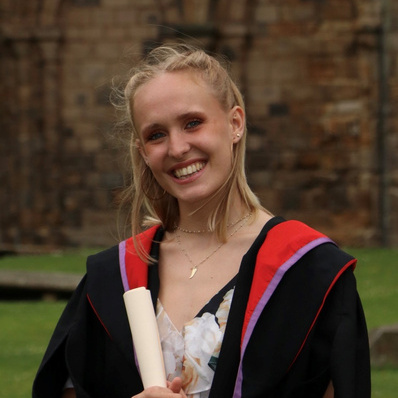
UK
Emilia Russell
Emilia Russell is a 2nd year PhD student in the Department of Engineering at Durham University, currently investigating the impacts of mechanical strain on the electrical properties of 2-dimensional semiconductors. In her free time, she enjoys sailing and organising seminars from industry speakers with the Women’s Engineering Society at Durham.
Why strained semiconductors are like crinkle-cut crisps
When applying strain to 2-dimensional transition metal dichalcogenides, it has been observed that the bandgap changes. The bandgap is the potential difference between the highest energy bounded (immobile) electrons and the delocalised (mobile) electrons.
Crinkle cut crisps taste better because they hold more salt, crinkle cut semiconductors insulate better because they hold more electrons.
This effect could be exploited in the next generation of synthetic skin. It could also be used to design flexible acetylene detectors to monitor food expiration, reducing food waste. To date, the relationship between mechanical strain and electronic properties has predominantly been shown through computational modelling. This research focuses on overcoming the issues that have hindered the realisation of these devices, such that the effects of strain on other semiconductor properties can be investigated. In turn, this will lead to a better understanding of the electrostatics and charge transport of these novel 2-D materials.

Hong Kong
Sihao Yu
Sihao is a 2nd year PhD student in the Department of Earth Sciences at the University of Hong Kong, under the supervision of Prof Louis Wong. He earned his BEng (2020) in Civil Engineering from Southeast University, China, followed by an MPhil (2023) in Geotechnical Engineering from Tongji University, China. His current research focuses on the application of artificial intelligence in geotechnical engineering practice, particularly advanced computer vision techniques.
In his spare time, Sihao enjoys outdoor activities like hiking and ball games
A deep learning-based framework for automatic rock core logging
Rock core logging plays a crucial role in obtaining geological and geotechnical information such as lithology and Rock Quality Designation (RQD). However, traditional rock core logging procedures are often tedious and time-consuming, especially for highly fractured rock cores. Have you ever imagined that such domain-professional work could be aided by artificial intelligence? Prof Louis Wong and his research team at HKU have developed an autonomous framework for performing core logging that mimics human processes.
This presentation will showcase ongoing research to further improve automatic lithology classification and RQD estimation. A deep learning-based framework has been trained to classify rock cores into different categories. Moreover, this framework can also segment cores at a high accuracy, allowing the subsequent automatic RQD calculation. Upon further verification, the plan is to update the framework and integrate it into a publicly accessible website for widespread use.
 2024 - online
2024 - online


Winner - South Africa
Sebasa Theresa Ramahlare

2nd Place - FEMS
Oliver Marian Preuß

3rd Place - Malaysia
Jerome Liew

Hong Kong
Sihao Yu

Winner - South Africa
Sebasa Theresa Ramahlare
Sebasa is from Mohodi ga Manthata, a village in the Limpopo province, South Africa. She has a BSc in Chemical Engineering from the University of Witwatersrand and is currently working at the Council for Scientific and Industrial Research (CSIR) in the Pretoria Gauteng province. She is on a 3-year graduate-in-training programme in the Advanced Polymer and Composites (APC) group in the Chemicals cluster, currently working on a project titled 'Biodegradable films: Potential Environmentally Friendly Alternative for Agricultural Mulching'.
Sebasa hopes to pursue my postgraduate MSc in Chemical Engineering in 2025.
Biodegradable Mulch Biofilms Potential Environmentally Friendly Alternative for Agricultural Mulching
Plastic mulching materials are used in agriculture, providing advantages to crop production. Conventional plastic mulch presents challenges with disposal, increasing pollution, and breakdown into microplastics, leading to ecological problems. The current materials are synthetic and nondegradable, raising environmental concerns. This work was conducted to develop biobased plastic materials from biopolymers and biomass waste residues. Local biomass was used to modify biodegradable polymers to tailor biodegradability to suit the mulching of different lifecycles.
The physical and chemical properties of the materials were studied. The optimized mulch plastics were taken for laboratory and agricultural field trials to test the value proposition and practicality of use. The results revealed good properties comparable to conventional nonbiodegradable mulch plastics, with the added advantage of 100% biodegradability. These offer a sustainable alternative to traditional plastic mulch, which reduces plastic pollution.

2nd Place - FEMS
Oliver Marian Preuß
Oliver studied Materials Science at the Technical University of Darmstadt, Germany. After investigating the mechanical properties of diamond coatings during his Bachelor's thesis, he did his Master's thesis in the field of dislocations in ceramics in 2021, under the supervision of Dr Xufei Fang. Continuing this topic, he started a PhD on dislocation-based toughening in ceramics co-supervised by Prof Dr Jürgen Rödel and Dr Xufei Fang.
Oliver attended 3 international (incl. USA and Japan) and 5 national conferences and was the winner of the 2024 FEMS Master Thesis Award. His first paper achieved 'Editor’s Choice' by the American Ceramic Society and he also won three prizes in the ceramographic competition of the American Ceramic Society, including the Roland B Snow award for best-of-show. In his free-time, he practices luthiery and builds his own guitars.
Dislocation-Based Toughening and Damage-Tolerance in Oxide Ceramics
The growing research interest in dislocation tuned functionality in ceramics is evident, with the most recent proofs of concept for enhanced ferroelectric properties, electrical conductivity, and superconductivity via dislocations. In this study, we focus on dislocation-tuned mechanical properties and demonstrate that, by engineering high dislocation densities (up to 1014 per m2) into KNbO3 at room temperature, the fracture toughness can be increased by a factor of 2.8 compared to the reference.
A strong interaction between the dislocations and the ferroelectric domains was found, whose effect on the toughness is ruled out by a high-temperature indentation experiment. By an improved deformation technique, the dislocation density in MgO can reach over 1015 per m2, which leads to full crack suppression.

3rd Place - Malaysia
Jerome Liew
Jerome Liew is a PhD candidate at Universiti Malaya (UM) studying Doctor of Philosophy in Physical Science. He is zealous in his research in energy storage devices and has participated in numerous exhibitions, competitions, and conferences with awards. He won top 3 in Faculty of Science 3-Minute Thesis at UM twice consecutively, and actively took part in International Invention, Innovation & Technology Exhibition (ITEX’23 & ITEX’24).
He and his group won a Gold Award and a special award in ;Technology Reversing Climate Change' in ITEX’23. Recently, he received a scholarship to attend Green Chemistry Summer School in Venice, Italy. He aspires to make technological advancements in the field of energy storage devices and desires to bring breakthroughs in electrified vehicles in the advent of Electric Vehicles.
MXene: Pursuing Fast-Charging Battery
The presentation exploits the properties of MXene in its incorporation with silicon-based anodes. Various MXene synthesis methods were examined for the best MXene without the direct usage of hydrofluoric acid. Silicon anode faces the issue of massive volumetric changes during charging and discharging that cause its pulverisation, limiting its practical applications.
By electrostatic assembly of MXene and silicon and the coating of the composite thereof, the exorbitant aspect ratio of MXene provides extra active sites for redox reaction, and the 3D matrix formed by MXene establishes electronic transport pathways and promotes carrier transfer, increasing rate performance. The matrix also provides mechanical integrity to the composite, confining silicon nanoparticles from pulverising, and improving the longevity of silicon anodes. This concurrently addresses the restacking phenomenon of MXene due to the intercalation of silicon nanoparticles, demonstrating the synergistic effects of the composite.

UK
Emilia Russell
Emilia Russell is a 2nd year PhD student in the Department of Engineering at Durham University, currently investigating the impacts of mechanical strain on the electrical properties of 2-dimensional semiconductors. In her free time, she enjoys sailing and organising seminars from industry speakers with the Women’s Engineering Society at Durham.
Why strained semiconductors are like crinkle-cut crisps
When applying strain to 2-dimensional transition metal dichalcogenides, it has been observed that the bandgap changes. The bandgap is the potential difference between the highest energy bounded (immobile) electrons and the delocalised (mobile) electrons.
Crinkle cut crisps taste better because they hold more salt, crinkle cut semiconductors insulate better because they hold more electrons.
This effect could be exploited in the next generation of synthetic skin. It could also be used to design flexible acetylene detectors to monitor food expiration, reducing food waste. To date, the relationship between mechanical strain and electronic properties has predominantly been shown through computational modelling. This research focuses on overcoming the issues that have hindered the realisation of these devices, such that the effects of strain on other semiconductor properties can be investigated. In turn, this will lead to a better understanding of the electrostatics and charge transport of these novel 2-D materials.

Hong Kong
Sihao Yu
Sihao is a 2nd year PhD student in the Department of Earth Sciences at the University of Hong Kong, under the supervision of Prof Louis Wong. He earned his BEng (2020) in Civil Engineering from Southeast University, China, followed by an MPhil (2023) in Geotechnical Engineering from Tongji University, China. His current research focuses on the application of artificial intelligence in geotechnical engineering practice, particularly advanced computer vision techniques.
In his spare time, Sihao enjoys outdoor activities like hiking and ball games
A deep learning-based framework for automatic rock core logging
Rock core logging plays a crucial role in obtaining geological and geotechnical information such as lithology and Rock Quality Designation (RQD). However, traditional rock core logging procedures are often tedious and time-consuming, especially for highly fractured rock cores. Have you ever imagined that such domain-professional work could be aided by artificial intelligence? Prof Louis Wong and his research team at HKU have developed an autonomous framework for performing core logging that mimics human processes.
This presentation will showcase ongoing research to further improve automatic lithology classification and RQD estimation. A deep learning-based framework has been trained to classify rock cores into different categories. Moreover, this framework can also segment cores at a high accuracy, allowing the subsequent automatic RQD calculation. Upon further verification, the plan is to update the framework and integrate it into a publicly accessible website for widespread use.
 2023 - online
2023 - online

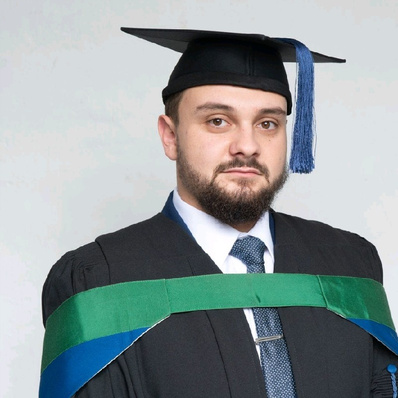
Winner - South Africa
Lodewikus Vorster
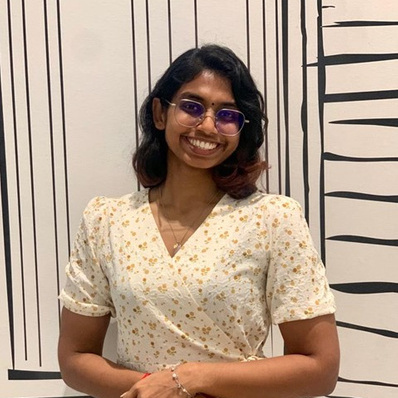
2nd place - Malaysia
Kugambikai Vangetaraman
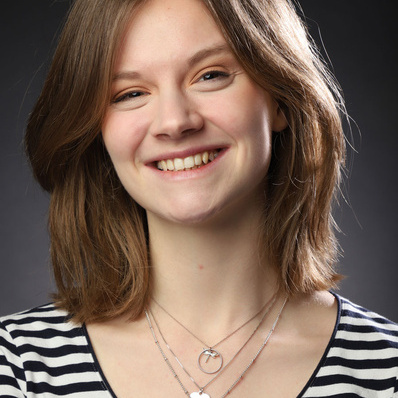
3rd place - UK
Georgina Burgoyne Morris
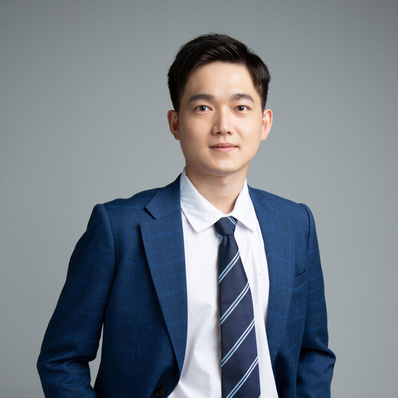
Hong Kong
Zihan Liu

China
Chuan Yu

Winner - South Africa
Lodewikus Vorster
Lodewikus is a first-year master's student in the field of physical chemistry and electrochemical analysis. In 2022, He achieved his honours degree, leaving an indelible mark with a project that sought to revitalize the green hydrogen production initiative in South Africa. This endeavour was about making clean energy solutions accessible to all by enhancing efficiency and reducing costs. In 2023, Lodewikus embarked on an exciting journey as a research student at eNtsa. This experience has been nothing short of transformative, igniting a fervent passion for the world of engineering and materials research.
Beyond the laboratory, Lodewikus is an enthusiast of renewable energy and its possibility to improve the lives of everyone. His spare time is often spent expanding his skill set to enter industry where he can start making his mark.
Cyclic potentiodynamic polarization testing of TIG welded 316L stainless steel for characterization of pitting corrosion
This presentation focuses on the characterization of pitting corrosion in 316L stainless steel in response to Tungsten Inert Gas (TIG) welding parameters. The presentation will begin by providing a concise overview of pitting corrosion theory before introducing the results of the investigation. Cyclic potentiodynamic polarization testing was conducted to measure the susceptibility of the three different weld zones (base metal, heat affected zone, weld root) present in welded 316L stainless steel to pitting corrosion under different welding conditions.
The presentation will also discuss microstructure analyses of both heat-treated and untreated samples through Scanning Electron Microscopy / Energy Dispersive Spectroscopy (SEM-EDS), offering insights into the material's structural responses. The presentation will conclude with the introduction of a full factorial experimental setup designed to evaluate pitting corrosion in relation to TIG welding variables.

2nd place - Malaysia
Kugambikai Vangetaraman
Kugam is currently pursuing her fast-track doctorate programme in Biomedical Engineering upon completion of her degree programme with first class honours in the year 2022. Kugam’s passion in research works instigated her to further improve on her degree project in developing vascular patch. Her research interest covers biomaterials and mainly focuses on electrospinning of polymers. Kugam had shared her research innovation during the IJN-UTM Research Convention 2023 and secured third place in the Innopitch Competition held during the 5th International Innovation Day 2023 in UTM. She sincerely envisions making healthcare accessible to all and believes research and innovation is one of the medium to achieve so. Besides research, her side interests would be weightlifting, yoga and she enjoys witticism.
Band aids for blood vessels: Co-electrospinning of polyurethane/chitosan & polyvinyl alcohol/elastin for vascular patch development
Coronary heart diseases build up fatty deposits occluding blood vessels and restricting blood flow. Surgical treatment is required to substitute the defective tissues with vascular patches. However, current commercialized synthetic vascular patches are non-biodegradable and lead to thrombosis. Therefore, there is a need for biodegradable synthetic polymers such as polyurethane (PU) and polyvinyl alcohol (PVA) for the development of vascular patches. The blending of natural polymers such as chitosan (CS) and elastin (EL) in the matrix of biodegradable polymers strongly enhances the mechanical and biological properties. Electrospinning is a prominent technique for the fabrication of fibrous vascular patches, as it enables polymer to be blended in achieving the desired properties mimicking native vessels.
Thus, this lecture emphasizes the introduction of PU/CS and PVA/EL co-electrospun vascular patch, which exhibits biodegradability, elasticity and anti-thrombogenicity, besides being biocompatible and biofunctional to support its implementation as a vascular patch.

3rd place - UK
Georgina Burgoyne Morris
Georgie is a first year PhD student at the Department of Materials Science & Metallurgy at the University of Cambridge, where she stayed having completed her undergraduate degree in Natural Sciences, specialising in Materials Science. Her research, within the Photoactive Materials group, surrounds the development of self-healing polymeric hosts for triplet-triplet annihilation upconversion – a process by which the efficiency of solar cells could be boosted through the ability to usefully harvest sub-bandgap photons.
When she’s not in the lab, Georgie enjoys cooking, playing music, and going to pub quizzes.
Stimuli-responsive polymers as self-healing materials
The ability to autonomously repair damage can lead to significant improvements in lifetime and recyclability of polymeric materials, reducing both waste and production costs. This may be achieved either extrinsically, through the release of healing agents encapsulated in the polymer matrix, or intrinsically, as a result of dynamic interactions between the polymer chains themselves. The latter systems have the advantage that their healing ability is not reliant upon the presence of a secondary reactive species, giving potential to repair more extensive or repeated damage.
This talk will discuss how, through tuning their chemistry, polymers can be made to intrinsically self-heal under ambient conditions, or in response to external stimuli such as heat or light. It will also explore the variety of applications for these materials, from healable protective coatings to recyclable thermoset resins.

Hong Kong
Zihan Liu
Zihan is a 2nd year PhD student in the Department of Earth Sciences at the University of Hong Kong, under the supervision of Dr Louis N Y Wong. He completed a BEng (2019) and MPhil (2022) in Civil Engineering at China University of Geosciences and Shanghai Jiao Tong University, respectively. His research mainly focuses on rock mechanics. His works have been published in journals like Rock Mechanics and Rock Engineering. Zihan tries to understand the complex thermal response of rock materials through experimental and numerical methods. He believes this fundamental research can further expand the knowledge of geotechnical engineering disciplines and promote the development of deep underground space and energy.
In his spare time, Zihan likes playing basketball, running, and swimming. He also enjoys travelling, where he can learn and experience different cultures and lives.
How does thermal shock affect rocks?
Have you ever wondered how ancient civilizations break giant rocks without drilling tools or explosives? They harnessed the power of thermal shock by heating rocks first and then cooling them rapidly. Rocks are composed of various minerals with different thermal expansion coefficients and thermal conductivity. When rocks experience rapid heating or cooling, temperature change-induced thermal deformation differs among adjacent mineral grains and thus creates intragranular and intergranular microcracks. Thermal shock sometimes changes the microstructure of rocks and thus permanently alters the physico-mechanical properties of rocks.
Through theoretical and experimental investigation, the mechanical response of rocks under thermal shock loading and influencing factors of thermal shock can be comprehended. Thermal shock has been applied in thermal spallation drilling for excavation and thermal stimulation for reservoir penetration enhancement.
This presentation will provide an overview of the mechanism, influencing factors, and applications of thermal shock in civil engineering.

China
Chuan Yu
Chuan is a graduate of Queen Mary Engineering School where he obtained his bachelor’s degree in Polymer Materials and Engineering. Under the supervision of Dr. Han Zhang and Prof. Guangcheng Zhang, his final year project focused on the 3D Printing of polymer composite and its application in energy absorption structure design. After completing his undergraduate program, Chuan is now pursuing a Master’s degree in the School of Biomedical Engineering at McMaster University where he studies the application of polymer material in health-related fields.
In his personal life, Chuan enjoys reading, baking and doing outdoor sports. He also likes music and is often found relaxing himself with Blues or light music.
Novel Energy Absorption Structure based on 3D Printed Polymer Blend System
Energy absorption structure (EAS) is a type of material system designed to absorb high kinetic mechanical energy through irreversible deformation, which is widely used in many applications. This research project selected Fused Deposition Modelling (FDM) method to build up different EAS with a TPU-PVDF polymer blend system. Totally, there are two design strategies used in this project: the gradient configuration design where the EAS is given a gradient structure and the hierarchical design where multi-scale pores are introduced into the EAS.
The success of the two designs in this project strongly depends on the application of FDM 3D printing method whose specific processing procedure will be given in this presentation, together with the performance of the EAS created to evaluate the design strategies used.
 2022 - online
2022 - online

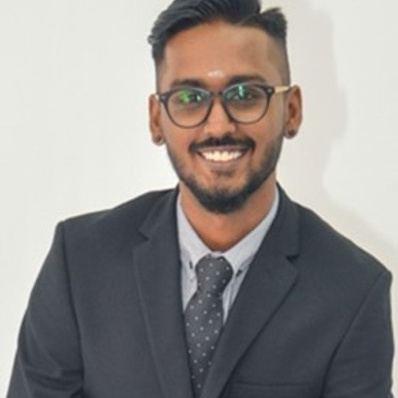
Winner - Malaysia
Rathosivan Gopal
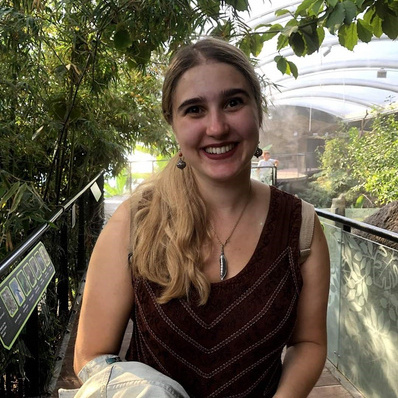
2nd place - UK
Lauren Eggleton
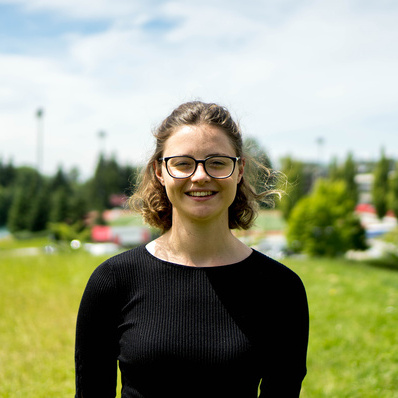
3rd place - Canada
Kate Fraser
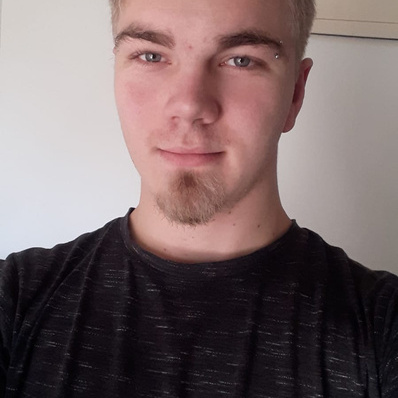
South Africa
Shane de Beer

China
Tianyi Li
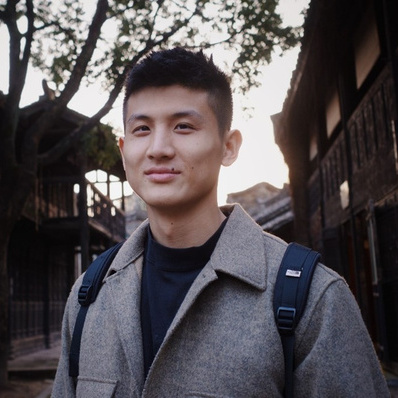
Hong Kong
Danning Li

Winner - Malaysia
Rathosivan Gopal
Rathosivan graduated in Bachelor of Engineering (Bio-Medical) from Universiti Teknologi Malaysia (UTM) with first class distinction in the year 2019. He was then offered to pursue fast-track doctorate programme in School of Biomedical Engineering and Health Sciences and managed to secure financial aid from student excellence program by Malaysia public service department (PPC-JPA) to further his studies. His research focuses on utilisation of biomaterials especially polymers and hydrogels as an implant material and has skilled in operating several high-end analysis instruments as well as performing in-vitro analyses. He is currently completing his six months training attachment at Laval University, Canada funded by the Canadian government. Ratho has presented his preliminary research work in Quebec, Canada at the QCAM student symposium 2022 and virtually at Japan in the 8th ICCME 2021 conference in the field of biomaterials, polymer and mechanics. Recently, he won the 3 Minute Thesis competition in UTM and represented the university to the national level. He also has been the organising committee for 8th and 9th IGCESH (2020, 2022) conference and gained valuable experiences in managing hybrid big-scaled events.
Apart from academic relations, Ratho has led several student associations during his doctorate study such as postgraduate student society (PGSS 2019/2020) and residential college student committee (JKM 2020/2021). Together with his team members, Ratho has organised variety of programs to engage students actively participate in activities outside their academic field and cope with the pandemic while excelling in their studies and research. As a graduate engineer and a researcher, he is keen in giving back to the community to raise awareness and help young students and kids to engage in STEM programs. He enjoys participating in charity programs and always willing to lend a helping hand to develop the community.
Immobilisation of factor VII through polydopamine grafting of polycaprolactone membrane for cardiac bleeding
The repair of cardiac bleeding is one of the processes in the treatment of cardiovascular diseases. Nevertheless, postoperative bleeding is still an issue following the implementation which derange the resources and cost. Oral administration of blood coagulation protein called Factor VII (FVII) has been effective to stop the bleeding. However, the short half-life may loss its effectiveness and frequent intake may distress the patient. Alternatively, synthetic polymers such as polycaprolactone (PCL) is used in drug delivery and wound dressing applications due to its favorable properties. Therefore, this study immobilises FVII on PCL membrane through polydopamine grafting using dropcasting technique to seal the bleeding at its maximum region and accelerate blood coagulation. The PCL membrane was used to graft a thin polydopamine film as the intermediate layer to enhance the surface compatibility and provide a platform for immobilisation of Factor VII afterwards.
The physio-chemical properties of the thin PCL membranes were characterized using several analyses. While the cytocompatibility of the membranes was evaluated with fibroblast and blood cells. Initial characterisation studies showed the success of FVII immobilisation through polydopamine grafting and the presence of FVIImolecules on the PCL membrane with enhanced surface roughness and hydrophilicity. While the biocompatibility tests showed increased cell viability and coagulation and the lowest haemolysis ratio on FVII immobilised PCL membrane. This validates the biocompatibility of the membrane and its ability to accelerate blood coagulation and potential application as cardiac bleeding sealant. Future works will focus on the mechanical strength and incorporation of adhesive component to the membrane.

2nd place - UK
Lauren Eggleton
Lauren is a second year PhD student in the Materials Science and Engineering Department at The University of Sheffield. She developed a passion for research during her Masters in Materials Science and Engineering, which specialised in biomaterials. During this time, she undertook a year in industry at Philips Research UK, working in oral healthcare on whitening and hypersensitivity. Upon returning, she channelled her love for research and nature into her master’s project on snail and slug locomotion in the Natural Materials Group, and has never looked back. Her EPSRC funded PhD focuses on understanding and bridging the gap between structure and function in snail and slug mucus.
Within the department and faculty, she is an active member of the postgraduate research community: supporting fellow students as part of the postgraduate research committee, helping teach undergraduates, and sharing research stories over arts and crafts lunches. Outside of the lab, she is a keen communicator and advocate for inclusion and diversity in STEM subjects, volunteering for outreach programmes and school events at both the local and national level. Through her work with the Bioladies Network and Natural Materials Association, she hopes to inspire people across all ages and backgrounds to discover the scientific wonders found in nature.
In her free time, Lauren enjoys exploring the Peak District, medieval re-enactment and has recently taken up ice skating. Though she can often be found at home curled up with a good book and her two cats.
A sticky situation: The contradictory material properties of snail mucus
Nature has evolved a vast range of 'smart' materials and is currently an untapped resource for novel biomedical and engineering applications. A surprising example is snail mucus. Embodying two contradictory properties, adhesion and lubrication, this material can switch seamlessly between them whenever the functional need arises. But how does it do this and can we replicate it?
In the search to understand these unusual flow properties, our creation of a snail locomotion translation device demonstrates how a more holistic approach to analysing natural materials can reveal more about their true nature. Discovering that like many industrial materials, snail mucus crystallises, but controlling this is via an elegant means of changing its salt concentration. Showing that we can find inspiration for tomorrow's advanced materials everywhere, even at the bottom of our garden.

3rd place - Canada
Kate Fraser
Kate is a PhD candidate in the Department of Chemistry at Simon Fraser University, supervised by Dr Steven Holdcroft. After completing her Bachelor’s and Master’s in Chemistry at Lancaster University in the UK, she moved to Vancouver, Canada to pursue her PhD. Her research field works to develop and improve devices to make hydrogen a viable replacement for fossil fuels. Kate’s research interests within this field lies in the design, synthesis, and characterisation of novel polymer electrolytes and binders for integration into alkaline electrolyzers and fuel cells. The main focus of Kate’s PhD is to develop a highly conductive polymer that can withstand the highly caustic, high temperature environments of the alkaline devices.
Within the Department Kate is an active member of the Chemistry Graduate Student Caucus and works to support and connect the students through weekly social events. Outside of the department Kate is part of the Electrochemical Society Student Chapter and has organised virtual and in-person symposiums which included speakers and attendees from various places in North America.
In her personal life, Kate is often found road biking around the Vancouver Lower Mainland and the various islands. And when the winter comes, Kate likes to ski at the nearby mountains.
Plastics for renewable energy devices
Plastics, also known as polymers, are long molecular chains that interweave with themselves to form complex structures like that of felted wool. These materials have proved to be essential in achieving a net-zero carbon economy through their usage in energy storage and conversion devices.
Hydrogen has the ability to store a large amount of energy, much like gasoline. However, unlike fossil fuels which release greenhouse gases, hydrogen only produces water when combusted. An Electrolyser uses excess renewable energy to create hydrogen fuel which stores energy. Fuel Cells then use hydrogen to generate energy and power transportation devices. Specific polymers have been developed to replace caustic liquids within the devices, creating systems that are safer, more compact, and more efficient. However, strongly basic solutions destroy the polymer structure resulting in material degradation and device failure. Here, polymers have been developed to withstand such conditions whilst maintaining high device efficiencies.

South Africa
Shane de Beer
Shane is an aspiring academic in the field of theoretical and computational chemistry. He is currently in his second year of PhD at Stellenbosch University after completing his BSc and MSc studies at the University of Pretoria. His research interests include investigating the quantum mechanical nature of materials and using this insight as a basis for developing novel materials, especially catalysts. During his previous studies, he explored chemical bonding in molecules using atomistic theoretical techniques and is now seeking to understand bonding in solid-state materials on a similar basis, as well as supplementing theoretical insights with experimental results from spectroscopy and x-ray diffraction. During his PhD, he is developing theoretical models on adsorption and photocatalysis in the solid-state to capture and convert unwanted products into more useful reagents. Shane has presented his work at ISXB4, ePCCr, AfPS-2021 and the 15th CHPC National Conference. He also published the first step in his journey in the Journal of Computational Chemistry. In future, he aspires to develop theories and techniques to further investigate the quantum behaviours of materials.
When Shane is not working, he can be found in the world of a thriller novel or enjoying the company of his two dachshunds. Otherwise, he is trying his hand at a new recipe or a new language.
Overcoming limitations on computational adsorption modelling for flexible materials
Experiments to determine sorption isotherms can take up to weeks to complete whereas computational modelling of sorption isotherms only takes a few hours. The software available limits the adsorbing materials to rigid structures, whereas modern research has shown that many materials of interest undergo structural changes upon guest adsorption.
There are many applications in gas separation, gas storage and catalysis that can utilize this flexibility. However, modelling the isotherm of a flexible material as a rigid structure can lead to inaccurate isotherm models. Here a stepped method is developed to model the isotherms of flexible materials accurately, utilizing the Materials Studio sorption module as well as the CASTEP software. The predicted isotherm for CO2 adsorption onto the MOF-508 material is then tested against the experimental isotherm to validate the proposed method. This, furthermore, gave fundamental insights into the mechanism for the adsorption of CO2 onto MOF-508.

China
Tianyi Li
Tianyi is now a Master's student in the state key laboratory of polymer material engineering in Sichuan University, supervised by Prof Zhongming Li. His research is focused on the advanced polymer processing technology by machine learning. Prior to this, he obtained his Bachelor's degree in Engineering in polymer material science and engineering with first class from Queen Mary University of London and Northwestern Polytechnical University under the supervision of Dr Han Zhang and Prof Yanhui Chen. His dissertation investigated the aerogel which can be used as EMI shielding material.
Tianyi is also an active member in the field of swimming.He has been taking professional training from 10 years old and became champion in the provincial college students' competition in 2019. He now works as the referee in swimming competitions.
MXene/rGO@PI aerogel with excellent EMI shielding performance
With the requirement to fabricate polymer aerogel that can be able to use in high EMI shielding, lightweight and heat resistance application, MXene/rGO@PI aerogel composite have been fabricated in a facile method combined dip-coating and direct foaming process to ensure the structural integrity and MXene adsorption, with an average shielding effectiveness of 25.37 dB and absorption coefficient (A) of 75% successfully achieved by 6.14 wt% rGO filling and 12.33 wt% MXene filling. The structure was strengthened by chemical and physical interaction between filler and matrix, and inner conductive network improved the thermal conductivity to enable better heat resistance. The fabricated aerogel offers potential uses in next-generation communication technology, miniaturised portable electronic devices and aeronautics and astronautics.

Hong Kong
Danning Li
Danning is a PhD candidate in the Department of Civil and Environmental Engineering at the Hong Kong Polytechnic University, supervised by Dr Leng Zhen. His research interests focus on sustainable pavement materials and technologies, especially the rubberized asphalt material. His PhD dissertation topic is “Multiscale Investigation on the Aging and Recycling Mechanisms of Asphalt Rubber Pavement”. With a good command of rheological, mechanical, and chemical analysis methods, he aims to interpret the intricate aging mechanism of asphalt rubber binder and develop customized rejuvenation methods for reclaimed asphalt rubber pavement to further promote the application of asphalt rubber pavement and disposal of waste tire rubber. Danning has presented his work at Transportation Research Board Annual Meeting, International Association of Chinese Infrastructure Professionals Conference, and International Transportation PhD Student Symposium. His works have been published in journals including the Journal of Cleaner Production, Materials & Design, and Resources, Conservation & Recycling.
In daily life, Danning has always been praised as versatile thanks to his proficient skills at playing the piano and basketball. His passion for these two hobbies is the power source of his life and always fuels his pursuit of research.
Investigation on the aging mechanism of asphalt rubber binder prepared with waste tire rubber
Asphalt Rubber (AR) is a sustainable paving material composed of bitumen and crumb waste tire rubber. AR presents enhanced pavement rutting and cracking resistance, and considerable environmental benefits including reduced tire-road noise and waste tire disposal. However, the aging mechanism of AR binder remains unclear due to the intricate rubber-bitumen interaction, which complicates the recyclability of reclaimed AR pavement (RARP).
Aiming at a deeper understanding on the aging mechanism, this presentation investigates the compositional and mechanical evolution of AR binder through experimental methods and micromechanical modelling. As a multiphase material, AR binders at different aging conditions were phase-separated to reveal the structural change during aging. Chemical tests were conducted to observe the rubber absorption behaviours during aging. Rheological tests and micromechanical evolution of AR binder and its components. The findings can provide theoretical support for the recycling and rejuvenation design of RARP.
 2021 - Online
2021 - Online
The World Final took place virtually on 12 November.

Winner - Canada
Hannah Ramsay
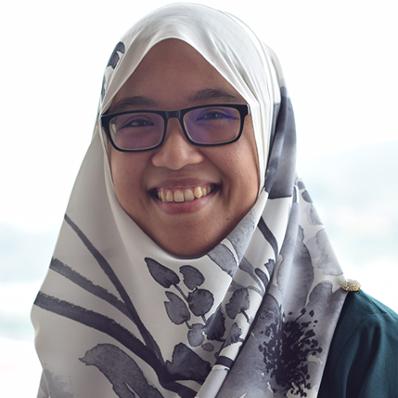
2nd place - Malaysia
Farah Hannan Abd Nasir
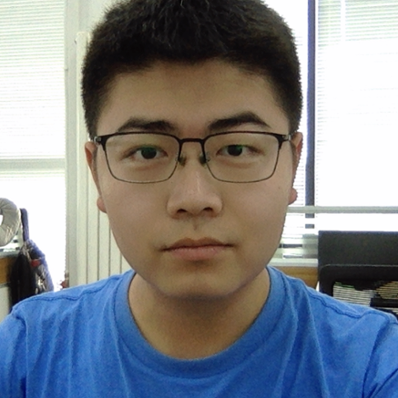
3rd place - China
Juncheng Fan
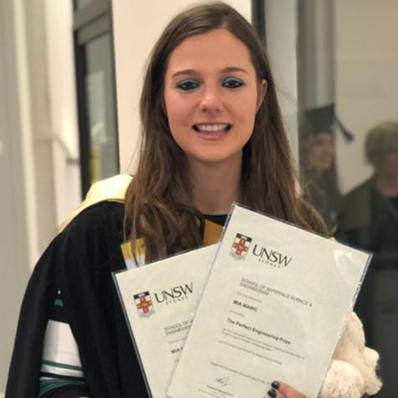
UK
Mia Maric
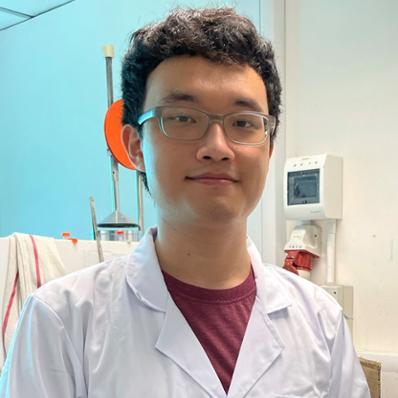
Hong Kong
Dio Brian Billi
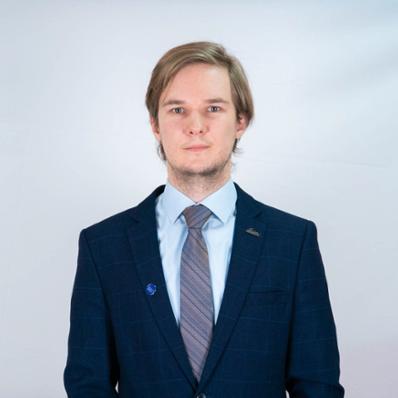
Russia
Ivan Perepletkin

South Africa
Shane de Beer

Winner - Canada
Hannah Ramsay
Hannah is currently an MD/PhD Candidate at Queen’s University, studying Chemistry. Previously, she obtained her BSc in Life Sciences and BEd in Secondary Education, also at Queen’s as part of the Concurrent Education program. Her research focuses on the applications of silver clusters, which are nanosized particles of silver that can be used for the combined diagnosis and treatment of disease. She is excited about helping realize the clinical applications of this material, and moving forward with this research in her role as a future clinician-scientist. Hannah’s research is supported by the Alexander Graham Bell CGS Doctoral Award, and has been published in several scientific journals, including Nanoscale.
Hannah is passionate about science and teaching, and helping others use science to understand the world around them. This has been recognized by several teaching awards, and Hannah was recently named a Top 50 graduate in 50 years at the Queen’s Faculty of Education. In her spare time, you can find Hannah performing in Chemistry magic shows, on the soccer field or hitting the ski slopes!
Silver Clusters: Small Material, Big Potential
Silver has been used since prehistoric times- in fact, it is one of the first five metals discovered by humans! What we commonly recognize as silver, for instance the silver in our jewelry, has all the properties of a bulk metal; it is conductive, shiny and malleable. As we look at silver on a smaller and smaller scale, its properties actually change. At nanoscale sizes, silver starts to look red or even yellow in colour. We can use these tiny molecules of silver to do a ton of interesting things, from looking at new drug therapies, to biological imaging to producing solar energy. By controlling the exact size and composition of these molecules, you can target specific cells and binding sites in the body. The goal of my research is to deeply understand this material and investigate how these really small particles can lead to big opportunities.

2nd place - Malaysia
Farah Hannan Abd Nasir
Farah Hannan Abd Nasir graduated with a Bachelor of Science (Hons) Applied Chemistry from International Islamic University Malaysia (IIUM) in 2017. She is currently a Graduate Research Assistant pursuing her doctoral studies at the Low Dimensional Materials Research Centre (LDMRC) at the Faculty of Science, Universiti Malaya. Her research interests include organic electronics particularly organic light-emitting diodes (OLEDs), computational and theoretical chemistry and doping mechanisms in organic semiconductors. She is also interested to incorporate machine learning and artificial intelligence as an application to design more efficient organic light-emitting diodes. In her spare time, she likes baking, playing indie video games, learning to code, playing the viola (not the violin!) and the piano. She thinks that science communication is an important skill to have, particularly now with the impending rise of fake news and misinformation.
Traps in Organic Semiconductors
Organic semiconductors are organic (carbon-based) materials that can conduct electricity. Their ability to sustain deformation without affecting its conductivity makes them the ideal choice for flexible electronics, thus enabling seamless human-device design interface, opening up various applications in healthcare, the internet of things, and information processing. However, despite their potential, the performance of these organic electronics is still not on par with devices made of inorganic semiconductors. In this lecture, we introduce some organic electronic materials, as well as their benefits and their current limitations. One such drawback is the prevalent presence of charge carrier traps, which is virtually unavoidable in organic semiconductors. Traps can capture and retain charge carriers, preventing them from being involved in the conduction of electricity, thus acting as a hindrance to an efficient charge carrier transport. We attempt to remedy this issue by adding dopants to the material, thereby filling the trap states. The addition of dopants has been shown to lead to a higher electron current for our chosen material. We believe this increase in electron current will lead to the fabrication of more efficient organic electronic devices.

3rd place - China
Juncheng Fan
Juncheng Fan is a graduate of BEng in Polymer Materials Science and Engineering from Queen Mary University of London and an incoming MPhil student in Micro and Nanotechnology Enterprise at the University of Cambridge. Juncheng has been participating in many research projects during his undergraduate years, focusing on improving people’s health and supporting environmental protection, including developing new materials for medical devices to improve their performance and durability. He designed a bioactive coating for orthopaedic implants that can facilitate bone regeneration and can exhibit antimicrobial ability if given certain stimuli during his undergraduate final-year project.
Juncheng enjoys intercultural communication and has been a volunteer at Queen Mary University of London Language Centre helping Chinese language learners improve their speaking skills since February 2021. During his leisure time, he always explores different kinds of food and goes hiking, and he is a shutterbug!
Polydopamine-based Antibacterial Coatings: Mussel-inspired Smart and Versatile Platforms for Orthopaedic Implants
Titanium and its alloys are probably the most popular materials for orthopaedic implants. However, titanium orthopaedic implants are vulnerable to bacterial adhesion due to opportunistic pathogens and may end up with failure. In addition, the incidence of bacterial adhesion can be exacerbated by their poor integration with human tissues. Introducing bioactive coatings on their surfaces is an effective approach to improve implants’ interactions with the human body and resistance to bacteria.
Inspired by mussels, polydopamine was found to be able to adhere to almost any solid surfaces. It possesses good antimicrobial activity, and can bond a range of chemicals to achieve many purposes like facilitating the formation of bones. More interestingly, polydopamine exhibits responsive behaviours to many in vivo and in vitro stimuli, such as pH and light. Therefore, polydopamine can be utilised to design smart platforms for more effective infection prevention for the next generation of orthopaedic implants.

UK
Mia Maric
Mia is a third year international PhD student studying Materials Science at the University of Manchester. She completed her undergraduate degree at the University of New South Wales in Sydney Australia, where she won the university medal for the top performing student in Materials Science and Engineering. Mia conducted an internship at the Australian Nuclear Science and Technology organisation, where her passion for nuclear materials and their useability within the nuclear power industry was developed. During her studies, she has been thoroughly involved in an array of outreach activities particularly focusing on equity, diversity and inclusion work. Earlier in 2021, Mia was selected to attend the global young scientist symposium where her passion for encouraging females within science and technology to pursue and excel in research related careers was enhanced.
Outside of research, Mia enjoys playing hockey, running and hiking. When not doing sports, she can be found volunteering at the local cat shelter and trying to bake the perfect chocolate chip cookie.
How do Hexagonal Materials Recrystallise?
Recrystallisation of Hexagonal alloys is extensively utilised within both industrial and research applications as a means of microstructural development and mechanical property refinement. However, the multifaceted nature of this process has meant that the mechanistic drivers for the microstructural as well as textural evolution that occurs during heating is not yet understood. Here, a range of experiments combined with computational modelling techniques have been able to highlight that the deformation imparted onto the alloy prior to recrystallisation strongly dictates its behaviour during heating.
In this study we have developed a model to correlate the deformed microstructure to the strong orientation dependent texture change that is seen in hexagonal alloys during recrystallisation. Therefore, an understanding of the relationship between deformation and recrystallisation is essential if heat assisted texture control is to be utilised as a cost-effective method for mechanical property enhancement of hexagonal alloys.

Hong Kong
Dio Brian Billi
Dio Brian Billi is a Final Year Undergraduate student studying Materials Engineering at City University of Hong Kong. Originally from Indonesia, Dio has worked on several projects including developing project prototypes for smart city applications and sustainability in protecting the environment. During his 3-year study program, he was able to complete his Final Year Project in CityU to fabricate and innovate in the field of food and material science; a prototype that holds potential in replacing plastic inner-lining in food packaging.
Currently undergoing his own entrepreneurship journey through the CityU flagship HKTECH300 program for start-ups, Dio and his team at OceanVoice HK are looking to protect the ocean environment and safeguard marine ecosystems for the future.
Apart from hunting for Hong Kong's best dessert spots and playing sports during the weekends, Dio enjoys reading fiction novels and talking with his team at OceanVoice.
Design of Edible bi-wax coating on nanocellulose-added bagasse paper for Green and Waste-reducing Food Packaging
To solve issues regarding wide use of plastics and food packaging contamination during recycling, my project incorporates widely available and bio-degradable materials to create a lightweight and sturdy paper packaging. It is composed of bagasse fibres with nanocellulose fibre addition and lined with an inner coating made of beeswax and carnauba wax. The research yielded positive results; with incorporated nanocellulose improving the tensile and flexural strength of the paper substrate packaging, and the bi-wax mixture inducing super hydrophobicity for food waste reduction and anti-frosting properties for longer shelf life.
Using characterization methods such as water contact angle tests, the ‘Lotus’ state was induced onto the waxed surface, causing food matter to slide easily and reducing food loss and microbial contamination. With further tuning of fabrication parameters and experimentation, the project shows promise in achieving a frozen or liquid-slurry food-safe packaging prototype that is environmentally safe and easy to recycle.

Russia
Ivan Perepletkin
Ivan Perepletkin is a graduate from Industrial University of Tyumen. Apart from studying, he is working as a specialist-geophysicist in the biggest scientific centre of ‘Rosneft’ Oil Company – Tyumen Petroleum Research Centre LLC, on the strategic project of geophysical exploration in North of Western Siberia (Gydan peninsula) at data interpretation direction. In his final thesis, he focused on electromagnetic methods integration together with seismic to refine the near-surface model in one of the gas-condensate fields in Eastern Siberia.
The technical aspects as well as practical results throughout the 3-year work on this project were presented in English at various scientific conferences, such as SPE Student Technical Congress (Aachen, Germany, 2019 and online, 2020), 7th SPE Annual Student Energy Congress (Zagreb, Croatia, 2020), EAGE Annual Conferences and Exhibitions (2018, 2020), XII SPE Scientific and Practical Congress ‘Oil & Gas Horizons’ (Moscow, 2020), and also published in peer-reviewed journals and proceedings. Apart from studying, since 2017, he has organized various international scientific events, such as conferences, workshops, field trips, etc. in the framework of the SEG Student Chapter team, where he used to be Vice-President and Scientific Committee Chair.
Integrated geophysical approach to clarify near-surface geological model in the permafrost zone
The presentation actualizes a kinematic inversion problem and the most competent electromagnetic methods combination (transient EM sounding and ultra-wideband georadar radiometry) for its solution – refining seismic data in the heterogeneous subsurface zone.
Given detailed theoretical review and empirical interconnections between analyzing parameters shows the complexing rationality. Considered examples of complexing sTEM with seismic data taken from Western and Eastern Siberia with different near-surface zone structure show the saturation forecast increase and correlation sTEM data with the well logging. Method has high horizontal resolution, but gives only averaged resistivity value vertically in particular horizon. Introducing the ultra-wideband GPR radiometry into a single set of methods allows neutralizing this problem and also expanding the studied electromagnetic parameters amount.
These arguments confirmed by the experimental realization while engineering-geological works. Recent technological breakthrough in ultra-wideband georadar radiometry allows already data quality increase in methods’ integrated use already in oil and gas fields’ areas introduction.

South Africa
Shane de Beer
Shane is an aspiring academic in the field of theoretical chemistry. He is currently undertaking his PhD studies at Stellenbosch University after completing his BSc and MSc studies at the University of Pretoria. His research interests include investigating the quantum mechanical behaviours of materials. During his previous studies, he explored chemical bonding using a computational approach and is now seeking to apply similar insights on the bonding in solid state materials. During his PhD, he is also learning experimental spectroscopic techniques to complement the theoretical models on the solid state. Shane has presented his work at the International Symposium on Halogen Bonding and published in the Journal of Computational Chemistry. In future, he aspires to develop theories and techniques to further investigate the quantum behaviours of materials.
Over the weekend, Shane can be found in the world of a thriller novel or enjoying the company of his two dachshunds. Otherwise, he is trying his hand at a new recipe or a new language.
Computational methods to investigate photocatalysis in metal-organic frameworks
Metal-organic frameworks (MOFs) are an increasingly important class of compounds in modern research. MOFs are able to absorb CO2 and various other gasses leading to their applications in gas purification. However, MOFs can also be utilised as catalysts. Aromatic ligands are common in MOFs which make them exceptional candidates for photocatalysis. In order to reduce the cost and labour invested in searching for photoactive MOFs, a computational approach can be followed. DFT and TDDFT models allow excited states to be studied to determine whether certain MOFs with the associated guest molecules are viable for photocatalytic reactions. The research here aims to develop the approach in order to identify host-guest pairs which are viable for photocatalysis. The hope is to provide a novel approach for designing reusable catalysts which can be applied to a wide range of reactions.
 2020 - Online
2020 - Online
The World Final took place virtually on 12 November and was sponsored by Companhia Brasileira de Metalurgia e Mineração.
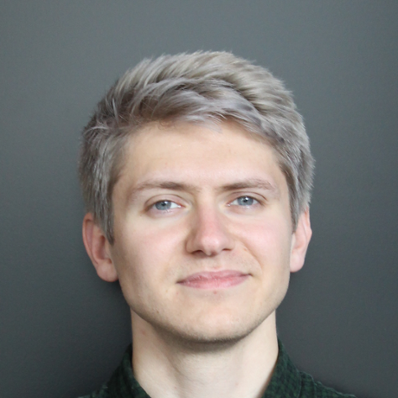
Winner - UK
Morgan Lowther
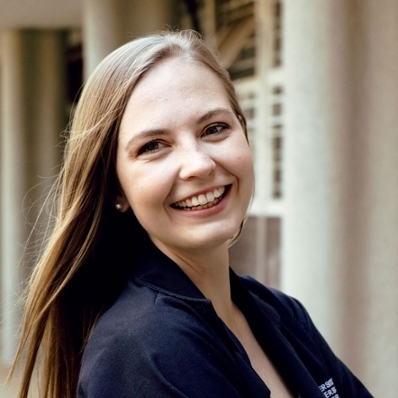
2nd place - South Africa
Bianca Gevers

3rd place - Australia
Anand Jyothi
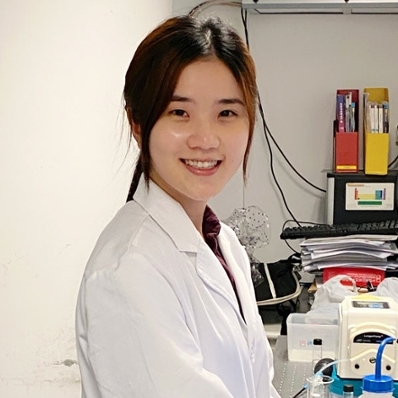
Hong Kong
Wen Di Chan
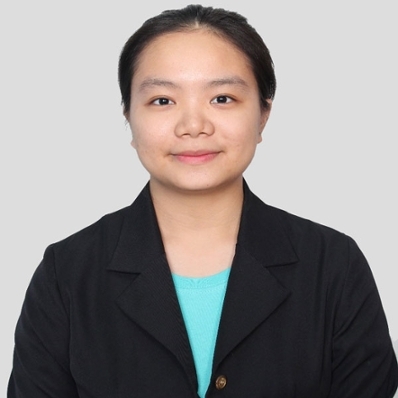
Malaysia
Kai Xin Tan
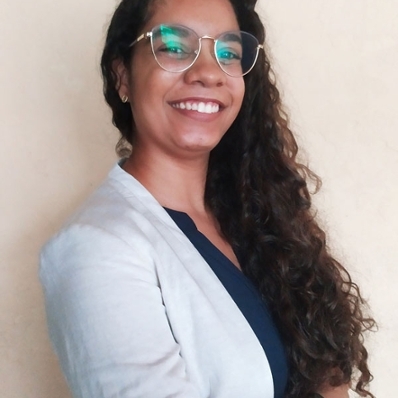
Brazil
Mariana Alves Ribeiro
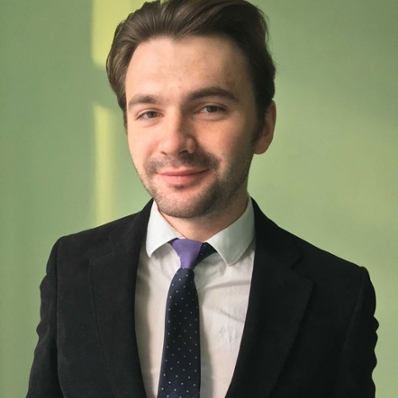
Russia
Andrey Polyakov

Winner - UK
Morgan Lowther
Having studied for an MSci in Natural Sciences at the University of Cambridge, UK, Morgan returned to his Midlands roots to work at the Manufacturing Technology Centre in 2016. As part of the National Centre for Additive Manufacturing, he spent time characterising the feedstocks used for metal powder bed printers. This led to a fascination with how powder, printing parameters and post-processing alter the behaviour of additively manufactured materials.
Now a final year PhD student at the University of Birmingham, UK, Morgan's research uses 3D printing to deliver antimicrobials from biomedical implants, hoping to tackle the increasing challenge of implant-associated infections. Engaging with science outreach since his undergraduate days, a highlight has been helping students become human 3D printers. In his spare time, Morgan is a (very) amateur baker, climber and badminton player
Head, shoulders, knees and microbes: 3D printing better implants
Over 100,000 joint replacement surgeries take place each year in the UK alone, accounting for 1 in 10 hospital admissions. But the prevalence of metallic implants belies that the human body is among the most challenging environments for materials design. Implants often fail not through mechanical means, but biologically, by failing to integrate with native tissues and being colonised by microbes. With the increasing prevalence of antimicrobial resistance predicted to kill more people than cancer by 2050, making previously simple surgeries life threatening, preventing implant-associated infection is a necessity.
Conventional approaches have relied on coatings and other secondary processing to modify implants after manufacture. However, in the past decade, advances in metal additive manufacturing (AM) have opened the possibility of radically new approaches to implant design and materials. How might AM simultaneously revolutionise the production of implants and help mitigate the threat of antimicrobial resistance?

2nd place - South Africa
Bianca Gevers
Bianca is a PhD student in the Department of Chemical Engineering at the University of Pretoria, South Africa. She is passionate about the environment, green technology and devising novel approaches to reduce society’s dependence on fossil fuels. Her work focuses on developing materials for renewable energy applications. She loves detail and seeks to understand the materials with which she works (currently layered double hydroxides, anionic clay) on a deeper level. As a result, she has spent most of her PhD investigating the mechanism whereby these materials interact with light and the implications of this on engineering the said materials for renewable energy applications. This has led to multiple publications and conference contributions. After completing her PhD, she hopes to pursue her research interests and (one day) head her own green technology company. When not disappearing into the ever-frequent rabbit holes of new research fields, she loves to look after her plant collection, play tennis, paint, play piano or violin, cook, bake, embroider, sew and host dinner parties.
Engineering photo-active materials for renewable energy generation
In a world where our lifestyle (unchanged) may result in self-destruction, the renewable generation of energy is ever more important. However, the development of renewable alternatives to fossil fuels is evolving too slowly to prevent some of the catastrophic effects of climate change. Many of these alternatives are based on limited natural resources and/or require large amounts of energy to produce or maintain – reducing their positive impact on the environment. In this lecture, a promising sub-category of these alternatives is explored – photo-active materials and their use in solar energy conversion. The mechanisms and applications of these materials are discussed, and their requirements and challenges explained. Layered double hydroxides – a specific class of these materials that can be produced in an environmentally friendly way – have shown promising results and exhibit potential for material engineering. These are used to illustrate the potential of the field and the challenges faced therein.

3rd place - Australia
Anand Jyothi
Anand is a design engineer at Worley, working on marine pipelines and subsea engineering. Anand did his Bachelor’s in Mechanical Engineering in India and completed his Master’s at the University of Western Australia. He was exposed to a broad range of industries during this time, including mining, wastewater management, biogas and bulk material transport. He has a passion for dancing and photography and has won competitions in the state level for both.
SSBC – Self-Regulating Suspended Biogas Collectors
The global biogas industry market is expected to double over the next decade with a value of $48.8bln (USD) by 2026. Conventional biogas capturing technologies present a number of problems such as limited access to the inside of the reactors, risk of damage to the cover that can cause complete loss of methane produced, and difficulty in retrofitting to existing open reactors. The Self-Regulating Suspended Biogas Collectors (SSBC) propose a new approach to capture gas from reactors. There are significant economic and social benefits for the Australian industry and community resulting from this new technology.
The SSBC can capture and retain produced biogas while floating on top of anaerobic lagoons or reactors. The system consists of a number of small floating biogas capturing modules that operate independently. The collectors have a system that control the internal pressures, which maintains the stability of the modules and stops them capsizing. SSBC's modular design negates the need to shut down the entire anaerobic system for maintenance. Desludging and crust removal operations of the anaerobic system have been shown to be much more accessible in contrast to current technologies. The patented SSBC method presents an opportunity for business to implement biogas energy generation with reduced maintenance costs and better production efficiency using a flexible system that can be retrofitted to current reactors.

Hong Kong
Wen Di Chan
Wen Di went to Hong Kong in 2016 to study Materials Engineering in City University. She was attracted by nanomaterials and their potential applications in a wide array of industrial sectors. After graduating, she joined Professor Lawrence Wu’s Research Group as a Research Assistant, focusing on biosensing and nanomaterials. She is currently in her first year of her PhD under the supervision of Professor Wu. Her research work involves using nanomaterials to improve the sensitivity and selectivity of biosensors. In her spare time, she plays Taekwondo Sport which she finds fun and challenging.
Molecular study on formation of multi-compartment structures by self-assembly amphiphilic terpolymer with dissipative particle dynamics (DPD) simulation
Efficient drug delivery, such as micelle and vesicles, plays a crucial role in disease treatment for cancer therapeutics. Current drug delivery research is moving from single compartment to multi-compartment structure to increase the capability of taking different drugs at one time. Dissipative particle dynamics (DPD) simulation at the molecular level was carried out to build micellar structures with more than one compartment. By monitoring the arm length of self-assembled amphiphilic star terpolymer, spherical, branched and cylindrical micelles and vesicles were obtained. Worm-like multi-compartment structures, which have a high potential for the uptake of several drugs, were obtained. Furthermore, evolution of the whole formation process can be clearly obtained and easily studied. DPD simulations have saved time and effort in developing new drug delivery mechanisms, and it is believed to be a powerful tool in driving development of the drug delivery system.

Malaysia
Kai Xin Tan
Kai Xin Tan graduated with a Bachelor’s degree in Metallurgical Engineering from Universiti Malaysia Perlis. She also holds a Diploma in Mechanical Engineering with first class honours from Politeknik Shah Alam Malaysia. She has participated in and won several medals in national and international competitions, namely iCompEx2017 (gold medal), ITEX2017 (gold medal) and Seoul International Invention Fair (bronze medal). She has been actively involved in students’ society and public speaking competitions. She loves sports in which she holds a black belt in WuShu martial arts. She has participated in several performances and a national singing competition. She enjoys singing and plays musical instruments.
Metastable phases and mechanisms in the dehydrogenation process of titanium hydride
Titanium hydride (TiH2), which is an intermediate product of titanium extraction, has great potential to be an alternative material to produce pure titanium powder. This research describes the characterisation of titanium powder after dehydrogenation using various techniques. Non-isothermal dehydrogenation up to 700°C has been carried out under a high-purity argon environment. High-temperature, in situ, x-ray diffraction and Rietveld refinement were used for characterisation. Cell parameters and phase changes that were determined through the Rietveld method proved that dehydrogenation occurs through heating. It was found that several metastable phases that shared the same crystal structures were formed during phase transformation. Lattice parameters increased under the influence of thermal expansion and reduced due to dehydrogenation. The effects of these two parameters on the phase transformation and crystal structures formed were studied. The non-isothermal dehydrogenation process had a sequence of phase transformations starting from δ-titanium to a final α-titanium phase.

Brazil
Mariana Alves Ribeiro
Mariana Alves Ribeiro is an undergraduate metallurgical engineering student at the Federal University of Minas Gerais. She studied Ferrous Metallurgy at the Montanuniversitaet Leoben in Austria and is also a Chemistry Technician. Since 2012, she has been working on mining, metallurgical and material science projects.
In 2017, she started an internship in a steelmaking group, accumulating around ten science projects, which won some academic and industry relevant awards. This included R&D around steelmaking reactors using water models and Computational Fluid Dynamics simulations. The last project has an environmental focus, using cleaner production concepts on greenhouse gases for steelmaking industry reduction. Her working passions are metals reduction and refining. In her spare time, she usually reads, watch some movies, and is now starting to do some abstract watercolour painting.
Greenhouse gas management and energy efficiency in an oxygen steelmaking plant
Carbon emissions and climate change are increasingly in focus. Several studies have been carried out on strategies to reduce the amount of greenhouse gases. According to the World Steel Organisation, between January 2019 and May 2020, 148,775,000t of steel were produced worldwide, demonstrating the expressiveness of the steel industry. Management of greenhouse gases must be carried out to reduce carbon dioxide emissions.
This presentation approaches the management of greenhouse gases for an oxygen steelmaking plant, under the standards of the Brazilian GHG Protocol. According to the results, carbon dioxide emissions in the melt shop have been reduced by 92% over the years. Pig iron consumption and gas recovery are variables with the largest impact on greenhouse gas emissions.

Russia
Andrey Polyakov
Andrey is a postgraduate student in the metallurgy department at Saint Petersburg Mining University. Before entering the postgraduate programme, Andrey received his Master’s degree at the School of Non-Ferrous Metals and Material Science in Krasnoyarsk, where he was part of a research unit involved in developing
high-amperage aluminium reduction cells. He continues his work dedicated to increasing energy efficiency and stability of aluminium electrolysis through designing new technological solutions. Andrey thinks that the sustainable production of aluminium is of great importance due to its constantly growing production rate and, as a result, environmental impact. Andrey likes to spend his leisure time playing the guitar, meeting his friends and travelling.
Primary aluminium production – how the wettability of carbon anodes influences energy efficiency
In 2019, almost 64Mt of primary aluminium were produced, exceeding the 2010 indicators by 40%. Primary aluminium production requires a huge amount of electrical energy, which is the reason why world producers apply much effort to reduce specific energy consumption. Due to the serious environmental issues the world is facing today, it is vital to use energy and resources sustainably. This lecture introduces aluminium reduction technology and ways to improve the energy efficiency of this process. It highlights the phenomena observed during the anode process – one of the most important parts of aluminium electrolysis – and how the wettability of carbon anodes influences the anode process and its connection to specific energy consumption. The presentation also discusses existing and potential technical solutions to improve the interaction between carbon anodes and cryolite-alumina melt, hence the energy efficiency.
 2019 - London, UK
2019 - London, UK

Winner - South Africa
Tamlyn Naidu
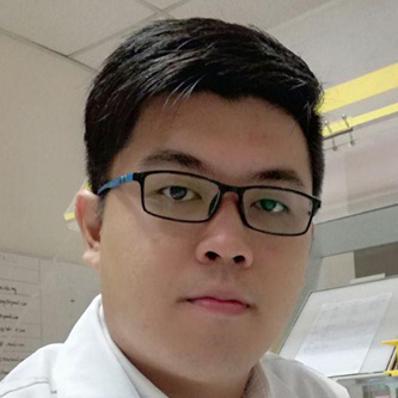
2nd place- Malaysia
Jia Yong Lam
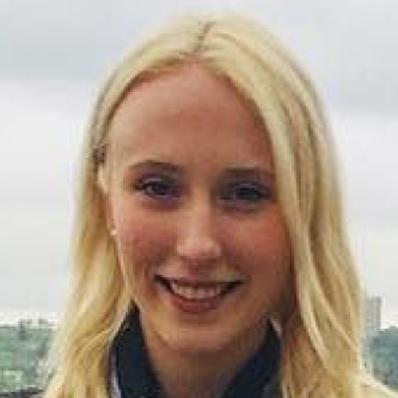
3rd place - Canada
Morgan Lehtinen
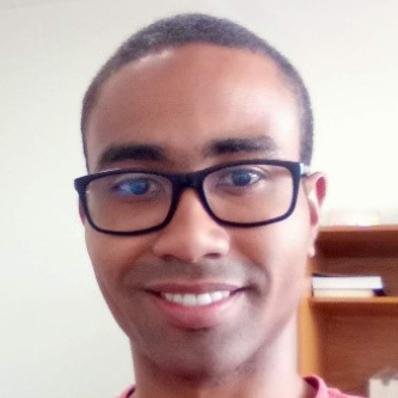
Brazil
Tiago Dos Santos Junior
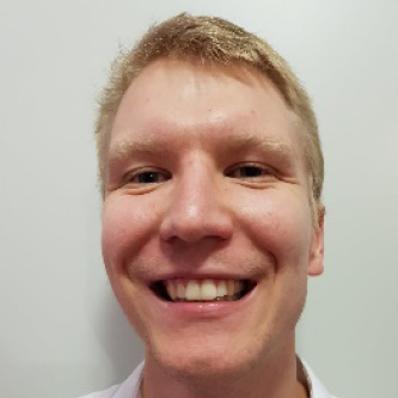
Australia
Michael Max Brown
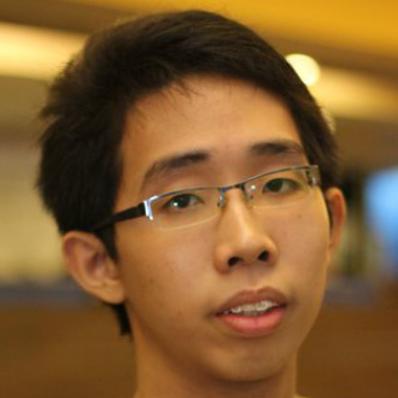
Singapore
Chuah Chong Yang
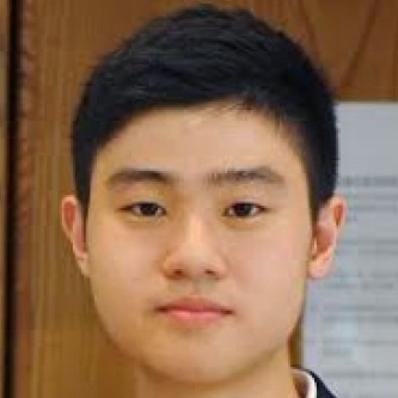
Hong Kong
Franklin To
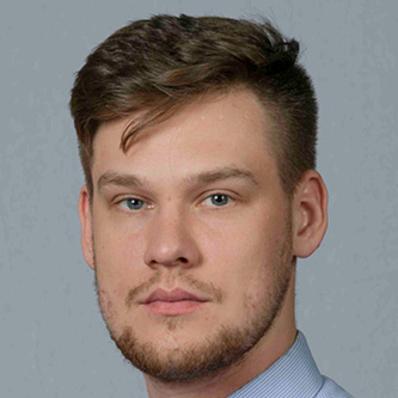
Russia
Suleiman Khusnutdinov

Winner - South Africa
Tamlyn Naidu
Tamlyn is a PhD student in the department of chemical and metallurgical engineering at the University of the Witwatersrand in Johannesburg, South Africa. She has spent most of her postgraduate degree involved in water rehabilitation and waste beneficiation projects, aiming to promote sustainability in the water space. She is part of the Industrial and Mining Water Research Unit and is also affiliated with the Center of Water Research. She believes that the failure to address the unsustainable use of water now will mean greater struggles in the future to achieve goals in a myriad other areas. Outside of school she is an avid cat enthusiast, food eater and movie watcher.
Acid Mine Drainage remediation system using waste products from the steel manufacturing and sugar industries
According to the United Nations, Acid Mine Drainage (AMD) is classified as the second biggest environmental problem facing the planet, due to the amount produced worldwide as well as the high cost of treatment. Cost-effective remediation methods are thus strongly needed. The operation of a waste-beneficiation treatment scheme incorporating the use of two waste products; steel slag and sugarcane bagasse, is one such method. These products produced in many AMD-affected areas, can raise the pH of the AMD, enabling metal removal through precipitation and promoting sulphate removal through biological reduction. The slag is valorised through this process; hereafter being used in construction applications. The study confirmed the potential of these products in AMD treatment through a two-step chemical and biological process. Optimisation of the process could result in low cost AMD pre-treatment, or as a way for mines to recycle their acid water for use as process or agricultural water.

2nd place- Malaysia
Jia Yong Lam
Jia-Yong is a second year PhD student in the Faculty of Medicine and Health Sciences at Universiti Putra Malaysia. His doctoral research focuses on the development of biosensor to improve the current diagnostics for leptospirosis, an often neglected disease, but of global importance. He completed his Bachelor's degree in biomedical science at Universiti Tunku Abdul Rahman, where he studied on genetic polymorphisms associated to nasopharyngeal cancer in his research project. He also holds a Master's degree in molecular medicine and bioengineering from National Chiao Tung University, Taiwan. During his Master's studies, he worked on the discovery of antivirals against dengue virus from natural products. He was awarded honorary membership of the Phi Tau Phi Scholastic Honour Society of the Republic of China for his academic achievements during his two-year stint in Taiwan. Having worked on various scientific fields in his researches, he believes that a multidisciplinary approach in research is the key for a more creative and ground-breaking solution to a problem. Outside the lab, Jia-Yong is an avid home cook and a food enthusiast. To him, doing research is like cooking; you need to plan, get the right materials, optimise the method, enjoy the outcome and finally do the cleaning.
DNA biosensor based on optical fibre for the detection of pathogen: A novel approach
Silica-made optical fibres transmit light through the total internal reflection principle and were originally intended for the use in communications. However, studies eventually discovered their biosensing potential. When light is propagated through the fibre, a portion of the light penetrates the fibre wall into the surrounding medium, recognising the different refractive index in the evanescent field. Thus, immobilising biological recognition elements at the surface allows for the detection of the specific analytes. Tapered optical fibre utilises the special geometries of the fibre to enhance its biosensing potential.
This presentation describes the development of a tapered optical fibre DNA biosensor for the detection of Leptospira DNA, a pathogen responsible for a globally important disease, leptospirosis. Optical fibres are tapered and functionalised by immobilising a DNA capture probe on its surface. The research findings show that the biosensor demonstrated good sensitivity and specificity for detecting Leptospira DNA, and has great potential to be developed into a new model of diagnostic.

3rd place - Canada
Morgan Lehtinen
Morgan graduated with a BSc from Queen's University, Kingston and stayed on to continue her studies as a PhD candidate specialising in polymer and materials chemistry. Under the supervision of Professor Guojun Liu, her research focuses on the development of functionalised 'smart' filters and their use in oil/water separation. Morgan envisions her technology as a greener alternative to current oil/water separation methods helping us achieve a sustainable future. Her work has been presented at numerous conferences winning multiple awards, most notably the 'Best Presentation/Paper' award at the 2018 National Meeting of the American Chemical Society in Boston, MA. Following her dream of being an entrepreneur, she recently teamed up with a group of students at the Queen's Innovation Centre to begin the process of launching a start-up company to take her green filtration technology to market.
Morgan holds various important roles within the University including Queen's Graduate Chemistry Society President, Chemistry Graduate Student Ambassador and Canadian Institute of Canada Local Chapter Student Co-President. In her free time, you can find her walking her dog along the Kingston waterfront, or hosting a dinner party with fresh produce from her vegetable garden.
H2Only: Smart filters for efficient oil/water separation
In a world that relies heavily on the use of crude oil as an energy source, clean oil recovery and spill remediation is of dire importance. Removing oil from surfactant stabilised oil-in-water emulsions has become an issue in numerous industries as current separation processes are tedious and wasteful of resources. Our research group has developed functionalised 'smart' filters that can selectively and efficiently separate the oil from oil-in-water emulsions. These filters are fabricated through a one-step thermally grafted polymer approach with minimal environmental impact. In a real-world scenario, these filters could be used to separate an emulsified organic phase from the aqueous phase when steam is used to extract crude oil from sands or at the surface of an ocean after an oil spill. In this presentation, I will discuss the environmental and operational advantages of this novel filter and its potential to improve the cleanliness of a normally dirty industry.
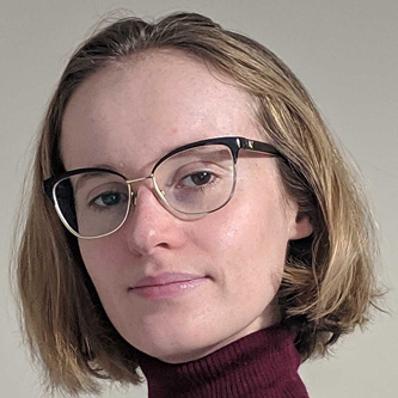
UK
Megan McGregor
Megan graduated from the University of Cambridge in 2015 with a first-class MSci in Natural Sciences, specialising in Materials Science for her final two years. With pilots in the family, aviation has always been of particular interest to Megan; this interest led her to embark on a PhD funded by EPSRC and Rolls-Royce plc investigating new alloys for commercial gas turbine engines. Her project looks specifically at a novel coating material required to attach abrasives onto the end of rotating turbine blades, in the pursuit of a more efficient shroudless sealing system.
Alongside her research, Megan recently completed an RCUK policy internship at the Government Office for Science, working on the Innovation and Industrial Strategy team as part of the Sustainable Economy Division. She enjoys being involved in her group's outreach activities, and has delivered a number of well-attended talks at the Cambridge Science Festival and at the inaugural Cambridge Soapbox Science event. In her spare time, Megan enjoys reviewing popular science books for Chemistry World, and studying Japanese - she is excited to visit Japan and present her research at the Beyond Nickel-Based Superalloys later this year.
World's hottest superglue: Materials requirements for better sealing in jet engines
Jet engines function using a high-temperature gas stream to do work and generate thrust. In the aviation industry, where fractional increases in efficiency equate to savings of hundreds of thousands of pounds, preventing loss of gas from this stream is crucially important. This requires sealing between the moving turbine blades and the stationary casing of the turbine. Any sealing solution must not only increase sealing efficiency, but must stand up to the ever-increasing temperatures and rotational speeds of turbines, whilst remaining light.
Such niche applications provide opportunities for new intermetallic materials, specially tailored to withstand this challenging environment. This talk will explain current and new sealing systems in the high-pressure turbines of jet engines, and explore the materials requirements for such new systems.

Brazil
Tiago Dos Santos Junior
For Tiago, every human interaction is an opportunity to educate. Education is understood by him as a process of continuous multilateral exchange, and its success is undoubtedly related to good communication. This is an essential skill nowadays as we need more than ever to motivate social engagement in global problems such as the energy crisis. Tiago developed his communication skills from childhood, when he started to study music and play the trumpet in an orchestra of young people. Curiously, he loves music, classical dance and education as much as he loves chemistry. His passion for the latter took him to a Materials Engineering career. He earned his Master in Materials Science and Engineering in the Federal University of São Carlos, and during his undergraduate and graduate studies, he has intern positions in RHI Magnesita Brazil and Imerys Aluminates France as a member of the Federation for International Research and Education in Refractories (FIRE). He is always curious about how materials can be applied in extreme environments and how we can produce them.
Tiago is currently working on his PhD thesis on the development of novel lightweight refractory materials for energy saving at high temperatures. Apart from his technical work, he takes ballet classes every week which is not as painful as it sounds, but still an exciting challenge. Tiago is keen on sharing his knowledge on how thermal insulators can be produced in a greener route and this is the main topic of his presentation.
Greener macroporous ceramics for saving energy in high temperature processes
Energy efficiency (EE) in industries comprises practices to reduce the energetic input needed to carry out a technological task. As the energy crisis and climate changes are on the spot and require immediate action, EE practices can help industries move towards a greener and sustainable scenario. Materials Engineering is a strategic ally, as new products can be designed to better convert, transport or keep energy in the different industrial processes. However, it would be a paradox to the EE philosophy if the design of new materials was not oriented towards greener routes. Therefore, in this presentation, the development of high-performance macroporous refractory ceramics will be presented, which can be applied as advanced thermal insulators at high temperatures such as those faced in various industrial sectors. The developed route allows to produce multiphasic macroporous ceramics with better thermal properties and lower environmental impact, fulfilling a lack of safe and green high-temperature insulating products.

Australia
Michael Max Brown
Michael loves chemistry! Whether he is at home or university, he is always doing this spectacular science. Some of his hobbies include harvesting carbon dioxide and converting it into starch (gardening), or breaking glucose down into alcohol (brewing). He studied chemistry and chemical engineering at Curtin University, Perth and graduated last year with first class honors. He just couldn't get enough of this beautiful science, so he continued his studies doing a PhD at Curtin University. He is now investigating new materials for harvesting microalgae. The only problem with doing all this chemistry is trying to talk about it.
Michael loves his hobbies and research, but while he finds chemistry the most fascinating thing in the world, some people (his girlfriend) have the complete opposite opinion and fall asleep at the thought of it. This has motivated him to improve his communication skills, so instead of boring people to death with ramblings, he can tell them an exciting story and bring to life the wonderful world of chemistry. This is what brought him to the IOM3 YPLC. He considers it the perfect opportunity to improve his communication skills and unravel the power of polymers with the fascinating story of programmable hydrogels.
Programmable hydrogels: Coding materials for medicine
Hydrogels are polymer materials that exhibit the ability to swell and retain a significant fraction of water within their structure without degrading. The material properties can be engineered for biocompatibility, selective permeability, mechanical integrity and chemical stability, providing a unique tool for medical implants and drug delivery. Despite this, the dynamic nature of the human body proves difficult to integrate into, as materials beneficial in one environment can become devastating in another. Programmable hydrogels may overcome this, with the ability to respond to the environment, changing its properties and functions periodically, reversibly and/or sequentially on demand. This is achieved through manipulable polymer crosslinks and/or responsive surface attachments that react specifically to stimuli. Michael's presentation will explore programmable hydrogels and how they open the door for sophisticated drug delivery carriers with the ability to release compounds specifically to stimuli, and advanced tissue engineering materials capable of responding to biological changes.

Singapore
Chuah Chong Yang
Chong Yang received his BSc degree in Chemical and Biomolecular Engineering from Nanyang Technological University (NTU) in Singapore in 2015 with first class honours. He is one of the recipients of the Nanyang President's Graduate Scholarship (NPGS), which is a prestigious and competitive scholarship scheme that encourages final year students to kick-start their research career by pursuing a PhD in NTU. He recently completed his PhD study in the School of Chemical and Biomedical Engineering under the supervision of Professor Bae Tae-Hyun. Chong Yang currently works in the Singapore Membrane Technology Centre (SMTC) as research assistant in Professor Wang Rong's research group. His research focus is mainly on the development and synthesis of nanoporous absorbents and polymer-based composite membranes for gas separation process.
Chong Yang's enthusiasm in teaching has been demonstrated through his assignment as teaching assistant throughout his PhD studies. He has been involved in teaching and supervising core courses in chemical engineering (Material and Energy Balance, Chemical Reaction Engineering), by providing supplementary slides, brief overview and tutorial sessions so that students are able to comprehend the contents learned during the lecture.
Potential of mixed-matrix membranes for O2/N2 separation process
Traditional fuel combustion which uses air (O2/N2) as the oxidant suffers poor energy efficiency due to the presence of N2. Thus, to increase the O2 content in the feed, O2/N2 separation using membranes has been considered as an attractive alternative compared to conventional cryogenic distillation. Nevertheless, polymeric membranes and nanoporous membranes suffer from permeability/selectivity trade-off limitations as well as from poor scalability respectively. Hence, mixed-matrix membranes were proposed as a technically viable option to enhance both O2 permeability and O2/N2 selectivity of resulting membranes while retaining the advantages of polymeric materials. It is generally challenging to surpass the upper bound limit for O2/N2 separation as commercial polymers possess low O2 permeability. Thus, thermal treatment of polymers at elevated temperatures to form Carbon Molecular Sieve Membranes (CMSM) was conducted. Gas permeation properties of CMSM reveal substantial improvements in O2 permeability without sacrificing O2/N2 selectivity with reference to its precursor.

Hong Kong
Franklin To
Franklin is a Chartered Engineer with over 5 years of experience in civil and geotechnical engineering. He is a professional member of the Institute of Materials, Minerals & Mining (IOM3) and the Institution of Civil Engineers (ICE). He received his Bachelor's degree in Civil Engineering from the Hong Kong Polytechnic University in 2014. Following his graduation, he joined AECOM as a graduate engineer to undertake the design of civil and geotechnical works. In 2016, he was promoted to Assistant Resident Engineer to carry out site supervision and contract administration works on a large-scale highway tunnel project with contract sum of £900 million. He also completed his part-time Master’s degree in Geotechnical Engineering from the University of Hong Kong in 2018.
Franklin is now a Geotechnical Engineer of the Tunnel & Cavern team at AECOM in Hong Kong. His areas of specialisation are predominantly design, construction, site supervision and project management of tunnels, rock caverns, explosives blasting, slope stabilisation, deep foundations, deep excavations and ground investigation works.
A comparison of empirical and numerical approaches for estimating rock support pressure on tunnel lining
In Hong Kong, the rock support pressure acting on the permanent tunnel lining is usually estimated using the empirical equations by Terzaghi's arching theory (1946) and the Barton's Q-system (1974). However, with the advanced methods, the assumptions made in these studies become too conservative. This presentation investigates the differences in estimated support pressure using empirical approaches and Finite Element Modelling (FEM) to develop a cost-effective solution. The influence of missing parameters in empirical equations and the rock mass behaviour surrounding the tunnel excavation are also studied.
It is found that the in-situ stress ratio k and rock mass quality are very significant to the support pressure. However, the influence from varying Young's Modulus Ei, Poisson's ratio v and Uniaxial Compressive Strength (UCS) are negligible. Also, the empirical approaches are not conservative to design spaced tunnels, unless further verified by FEM.

Russia
Suleiman Khusnutdinov
From his earliest childhood, Suleiman's biggest passion was communicating with people. He enjoys hot discussions in which truth is born, listening and always trying to be heard. His parents raised in him a love of literature, classical, scientific, political, and he read everything that fell into his hands. Two of his favourite things, he grew and fed, and now he is implementing them. Suleiman is a PhD candidate at the Mining University St Petersburg, Russia. He is also writing a second PhD thesis on metallurgy at the Mining University Leoben Austria (Montanuniversität Leoben). He gives lectures and often makes presentations in both his speciality at the university and as a popularizer of science.
After graduating from university with a degree in chemical engineering, Suleiman was engaged as a research assistant in an engineering company in Russia. There he gained profound analysis and problem-solving skills, was responsible for identifying and solving technical problems, and also tuned his communication and consensus skills, as he often had to submit and sell his work to middle and top management. Finally, during his final year of work, he took the lead, guided the daily work of five junior members of the team, and actively participated in the training of new employees. Together and with the diligent work of the team, he solves environmental problems, problems of the formation of high-stable water-hydrocarbon (water-oil) emulsions and the formation of industrial wastes at many enterprises in Russia.
The gold we lost: Man-made waste and highly-stability water-oil emulsions as the raw material of the future
The development of industry takes place in terms of constantly increasing demand for environmental standards of enterprises. The problem of formation highly-stability water-oil emulsions is relevant; their formation and accumulation provide not only an environmental hazard but also cause an economic loss to enterprises. A method based on evaporation of the water phase of these emulsions can be an alternative method of dehydration of waste. But a serious problem arises when the emulsion is heated; accumulation of a critical mass of water on the heating surface, the process of boiling is destabilized, overheating of globules of water leads to the overthrow of the emulsion, which makes the dehydration process impossible. As the primary method, we have proposed the thermomechanical dehydration of liquid oil waste. This method implies that the evaporation of the water phase takes place under mechanical action that prevents the coalescence of water droplets and their accumulation on the heated surface.
 2018 - Port Elizabeth, South Africa
2018 - Port Elizabeth, South Africa

Winner - Australia
Kyle Saltmarsh

2nd place - Hong Kong
Lin Guo

3rd place - Malaysia
Andrew Ng Kay Lup

UK
Sam Lawton

Russia
Alexandra Kuznetsova

Brazil
Matheus Santos
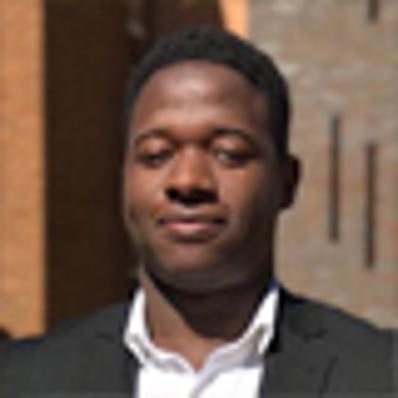
South Africa
Fariraishe Nyoni

Singapore
Naveen Tiwari

Winner - Australia
Kyle Saltmarsh
To Kyle, public speaking is the ability to inform, persuade and entertain, and is one of his favourite life skills. He has given business value presentations in corporate environments, presented technical content from his PhD research and given educational lectures at a university level. Kyle's personal favourite however, has been performing stand up, because at least then he is supposed to be laughed at.
Kyle loves travelling, camping, rock climbing, basketball and he also used to be an amateur magician. He is now a very amateur magician. He completed undergraduate degrees in Mechanical Engineering, Physics and Applied Mathematics, and then worked on a mine site as a mechanical engineer at BHP Billiton before returning to university to complete my PhD in submarine vibration and acoustics for the Australian Defence Force. I am now a Cognitive Computing Consultant at IBM, working with Rio Tinto to incorporate intelligent analytics into the decision-making process for their scheduling operations.
Kyle's goal has, and always will be to work on exciting challenges, learn a lot along the way and to do it passionately and that's how he will tackle the 2018 Young Persons' World Lecture Competition final.
Acoustic based condition monitoring in the resource industry
The acoustics of many types of equipment contain a wealth of information pertaining to its operating condition. Acoustic based condition monitoring is used throughout industry to some degree, however, its full potential has yet to be harnessed. Traditional methods of condition monitoring, utilising performance and operational data, have historically taken precedence. However, the recent technological advancements in both hardware and machine learning allow new powerful and exciting opportunities to utilise acoustics for condition monitoring.
This presentation explains the concepts behind how acoustics are applied to monitor the condition of wheel bearings belonging to the wagons of an ore train. This technique is powerful as it is robust, easy to implement and cost effective.

2nd place - Hong Kong
Lin Guo
Lin studied in the Department of Material Science and Engineering at South China University of Technology, China, and obtained her Bachelor's degree in 2014. She joined Professor Min Wang's group in the Department of Mechanical Engineering at the University of Hong Kong (HKU) in September 2014 to start her PhD in the field of biomaterials and engineering. At HKU, she has been conducting investigations into multifunctional scaffolds formed by biodegradable biomaterials for both tissue regeneration and early detection, and treatment of recurrent cancers.
She is particularly interested in developing cell-laden scaffolds incorporated with growth factors and gold nanoparticle-based theranostics for postoperative cancer patients. She has made several presentations of her research work at different international conferences.
Combatting cancers with a new superweapon
Stomach cancer causes millions of human deaths and is mostly treated by surgery. After surgery, new tissue must form at resection sites for restoring body functions. Scaffolds, biodegradable porous structures that support cell activities, are often used for regenerating body tissues. Another major issue for postoperative cancer patients is the high cancer recurrence rates. Recently, gold nanoparticle-based theranostics, which can provide highly desired diagnostics and therapeutic functions for cancer, are hotly pursued. With expertise in both tissue engineering and cancer theranostics, we have developed a new superweapon - multifunctional medical devices that integrate nanofibrous scaffolds with nano-sized theranostics for both regeneration and early detection, and effective treatment of recurrent cancer. These advanced devices, which also contain growth factors and live cells for enhancing tissue regeneration, are made using novel fabrication techniques. Therefore, no more fears, cancer patients - we are here with you to combat cancer with a new superweapon!

3rd place - Malaysia
Andrew Ng Kay Lup
Andrew graduated summa cum laude in Bachelor of Engineering (Hons) Chemical Engineering with first class distinction from Universiti Tunku Abdul Rahman, Malaysia in 2016. In the same year, he was offered by Malaysian government to be one of the MyBrain15 KPT scholars under the nationally coveted scholarship programme to pursue an engineering doctorate study in University of Malaya, Malaysia. His research interests include theoretical catalysis, rovibronic spectroscopy, catalytic reaction engineering and quantum thermodynamics with application foci of fuel upgradation and biomass processing. His two-year stint in doctorate research on hydrodeoxygenation of phenolics for fuel upgradation has resulted in an output of 9 written scientific papers and one potential patent.
Andrew has presented his work at the 3rd ICChESA 2017 and received the Best Oral Presenter Award in the field of chemical reaction engineering, polymer and composite materials. He is also a silver medallist of the National Nanotechnology Olympiad. Currently, he is representing his institution for the 3-minute Thesis and Falling Walls Lab competitions at national level. Away from the lab, he reads books on Hebrew, Greek, astrophysics, philosophy and theology. He enjoys watching online lectures and TED talks from various universities while occasionally giving lectures to undergraduates when necessary. In addition, he enjoys playing four musical instruments, of which the violin is his favourite. Andrew is also passionate in inspiring youths through his education talks and medical charities during his mission trips with his team.
Bio-crude oil from lignocellulosic biomass: A zero-to-hero energy scenario
The bio-crude oil produced via catalytic thermochemical conversion of lignocellulosic biomass is a potential renewable energy source in the wake of the forthcoming decline in fossil fuel supply and the ever increasing oil demand. This process is valuable as it converts such biomass waste into high-value fuel and valorized chemicals. The feedstock of this process such as agriculture residues, wood residues and municipal solid wastes are abundant in nature and can be collected without disrupting food production. Lignocellulosic biomass is made up of lignin, cellulose and hemicellulose which are the source of carbon, hydrogen and oxygen. High carbon content is important for high heating value of oil, but high oxygen content in biomass would also cause bio-crude oil to be corrosive and chemically unstable. Therefore, metal-zeolite catalyzed thermochemical conversion of lignocellulosic biomass is required to form bio-crude oil that contains simpler hydrocarbons in higher proportion.

UK
Sam Lawton
Sam graduated from the University of Warwick with an MChem in 2014. His masters project, in the Warwick Electrochemistry and Interfaces Group (WEIG), focused on the large scale synthesis and patterning of graphene nano-ribbons. With a taste for organic based electronics Sam was inspired to work in the field of renewable energy resources, specifically organic solar cells.
Sam started his PhD under the supervision of Professor David Haddleton in July 2014. His PhD is sponsored by the advanced materials sector of Merck ltd and focusses on investigating the intricate connection between backbone structure and optoelectronic properties of conjugated polymers for application in organic photovoltaics. Sam's research and eagerness to learn has taken him to the USA to work with Professor Wei You at the University of North Carolina (Chapel Hill) and to present his work at a number of international conferences, most recently the American Chemical Society Spring Meeting in San Francisco, April 2017.
Outside of his project, Sam has worked with external companies through the Warwick Polymer Characterisation RTP on a number of materials characterisation and analysis projects. He has also taken on roles outside of the lab organising and hosting the social events for Warwick 2016 Polymer conference (500+ attendees). In his free time, Sam likes to engage in sports such as squash, football and running, although when it comes to the rugby, he's more at home sitting back and watching the professionals do it.
Polymer power: From light to current
With the world's energy demand predicted to increase by 48% between 2012 and 2020, relying on the limited supply of traditional fuels is no longer a viable option. Further to their growing scarcity, traditional fuel supplies release large amounts of waste and are a major contributor to annual greenhouse gas emissions. Inspired by the growing demand for economically viable and renewable energy sources, Organic Photovoltaics (OPV's) are attracting significant attention. With efficiencies exceeding 12%, these devices are nearing commercialisation.
In this talk I introduce some of the semiconducting plastics used in organic photovoltaics and we explore how molecular sequence in polymers can influence their properties and the future of this market. I look at what influences the world of science and technology and demonstrate how the world around us can be an infinite source of inspiration in world leading research.

Russia
Alexandra Kuznetsova
Aleksandra graduated from St Petersburg Mining University, Russia, in 2014 and started her postgraduate studies in oil engineering in the same university. The purpose of her research is increasing oil productivity from low-permeable reservoirs with surfactant solutions. Aleksandra has developed and patented her own surfactant which is successfully applied in the oil industry.
Aleksandra has also been awarded scholarships from BP Company, government and the President of Russia for her research. She has taken part in traineeships in the Marubeni Corporation, Tokyo, Japan and has also participated in international conferences (TU Bergakademie Freiberg, MINES ParisTech, AGH, Krakow and others).
Extracting oil from impossible-to-extract rock
The investigation of surfactant treatment efficiency and its integrated effect on oil and reservoir rock is conducted, as well as its applicability analysis for low permeable polymictic reservoir. Based on the results of cation-active and monionic surfactants research, as well as observation of their properties combination, the new surfactant solution was developed. This composition declared itself as a substance that is able not only to wash residual oil out of the rock surface, but also efficiently inhibit clay swelling process.
Subject to the results of hydrodynamic and physical modelling of the oil displacement process, the new technology for effective application of the developed composition of surfactants was created. Developed technology of the flooding process of low permeable clay reservoirs using the created and patented surfactant composition can increase the oil recovery factor more than 4.3%.

Brazil
Matheus Santos
Matheus earned his Master's degree in Materials Engineering in Technology Development from the Federal University of Sao Carlos (GEMM/UFSCar) in 2018. His passion for materials science relates to the role of steel and refractories in the social and economic development of our society. This led to an undergraduate exchange programme in POSTECH (Pohang University of Science and Technology) in South Korea, home to one of the most renowned steel research centres in the world, where he explored ideas and examples of success. He believes that many improvements in our industry and society require entrepreneurial and innovative ideas and this motivates his work.
Matheus has visited several steelmaking sites and worked in two steel companies (POSCO and HYundai Steel), with complementary experience in the refractory sector (an internship at Magnesita and a graduate sponsorship by Saint-Gobain). Beyond academic and professional activities, Matheus is creative, has strong leadership and good communication skills, and has always been involved in the organisation of group events and activities. Besides engineering, he enjoys travelling, music and eating good food.
Insights on the optimisation of the steel ladle process from a refractory perspective
The modernisation of metallurgical processes like steelmaking is intrinsically related to improving vessel linings and process control. Refractories are the material commonly applied to the lining because they can withstand the aggressive environment of steelmaking. Monitoring and controlling have recently shown their importance to general steelmakers, but there is still much to be explored.
In this context, understanding and predicting the thermal and energy condition of the metallurgical process is a first step in modelling and designing tools to help identify the best lining for production solutions. Indeed, optimised steel ladle linings can significantly impact operational conditions, safety, energy consumption, productivity and costs of the process. The study aims to highlight scenarios in which the refractory lining advances the steel ladle operation, according to numerical simulation results for different lining materials and thicknesses.

South Africa
Fariraishe Nyoni
Fariraishe is an undergraduate mining engineering student at the University of Zimbabwe. He started his undergraduate studies in 2013 and is set to graduate in September 2018 with a Bachelor of Science Honours in Mining Engineering. In his third year, Fariraishe worked at Anglo American Underground Platinum, where he started his current project which aims to increase the blast advance in underground platinum mines. The project received interest from the mine which went on to allow Fariraishe to carry out numerous trials throughout the mine.
Fariraishe has also participated in Engineering Paperette Poster Presentations where he presented the same project. He enjoys solving engineering problems and has a passion for blasting and explosives science.
Burn cut optimisation to increase blast advance at Unki mine
In underground blasting, the pull of the initial cut is the limiting factor for the success of the rest of the round. Unki mine had been failing to obtain target underground blast advance of 3m using a 9hole cylindrical burn cut for its blast, creating a lot of problems in costs and safety. This project was aimed at optimising the 9hole cylindrical burn cut's effective pull by increasing the depths of the relief holes in the cut. By improving the pull of the first cut, a critical step is made towards improving the entire round and solving the problem of advance. In testing, relief holes were drilled to depths longer than that of the cut's charged holes by an increasing depth of 100mm through each trial. The overall objective was to achieve a blast advance of 3 metres or better, using an economic method and the existing drilling equipment at Unki.
Increased pull would result in savings of both time and cost at Unki mine and would also allow the mine to achieve target blasted production ore values. The testing was done in the Chazezesa 9South underground section at Unki mine. Full blast rounds utilising the 9hole cylindrical burn were drilled and blasted. After completing al testing and analysing results, this data suggested that an average advance of 3.08 metres was being obtained through the application of relied holes increased in depth by 300mm. The trials consistently showed an average advance increase of 0.28m. This provided a solution to the problem of failure to meet target advance at Unki mine. The charge was also analysed to only increase the drilling costs by 5% which is within an acceptable range, considering the ore gained from the improvement in blast advance and the costs of re-drilling, charging and blasting the bootleg left by failure to meet target advance.

Singapore
Naveen Tiwari
Naveen received his Master of Technology in Materials Science and Engineering from the Indian Institute of Technology, Kanpur, India, in 2015. His masters project focused on the crosslinking of biodegradable polymers. He developed a novel method to increase the interfacial interaction between poly vinyl alcohol (PVA) and cellulose. He developed azide-alkynyl cycloaddition reaction to covalently link PVA and cellulose. With a taste of polymers and chemistry in the background has inspired to work in the field of healable flexible materials for next generation electronic devices like E-skin.
Naveen started his PhD under the supervision of Professor Nripan Mathews in August 2015. His PhD focusses on investigating the self-healing flexible and transparent materials for electronic devices. Self-healing systems empower the field of electronics which has taken it into a new generation electronics in the application of wearable electronics. He was also the recipient of the Nanyang Technological University Research Scholarship (ongoing) and qualified GATE examination and in 2013 he was awarded the MHRD Scholarship, Govt. of India during his Master of Technology.
Apart from improving his skill in academia, Naveen has tried to hone his interpersonal and leadership skills. At present, he holds the portfolio of the Residential Mentor (RM) of Hall 3, NTU, Singapore. He also held the position of Treasurer during the 2016-17 academic year, and Sports Secretary during 2017-18, at the Materials Science and Engineering Graduate Students' Club, NTU Singapore. Apart from playing a vital role on organising committees for various successful academic events hosted by MSE-NTU and interacting with eminent researchers, Naveen has also contributed to student welfare through fundraising, mentoring and clean campus initiatives. Apart from travelling and listening to musing, Naveen is very fond of cricket and badminton.
Self-healable and flexible materials for next generation electronic devices: Smart materials
Self-healing, flexible, transparent electrodes could transform the way of fabrication of electronic devices in future. Challenges associated with mechanical fracture of electrical conductors has hindered the realisation of truly flexible, robust and high performance wearable electronics. The remarkable achievements in transparent and flexible electrodes have raised widespread interest in research groups in flexible electronics, owing to their low cost fabrication, easy scale up and unique properties.
However, they still suffer from innate problems like mechanical rupture, scratching and bending torsion because of their 'soft' and flexible nature related to their solid counterparts. Hence, self-healing capability would be highly desirable for these electrodes in flexible electronic devices. Self-healing systems empower the field of electronics which has taken it into a new generation of electronics in the application of wearable electronics. The ongoing state of the art is where research has demonstrated self-healing polymeric layers with conducting materials as top electrodes to form self-healing conducting systems.
 2017 - Perth, Australia
2017 - Perth, Australia

Winner - Singapore
Vidya Chamundeswari Narasimhan

2nd place - UK
Ilija Rašović

3rd place - Malaysia
Zheng Yu Ng

Australia
Prabhu Elango

Brazil
João Guilherme Prado

Hong Kong
Arthur Ng

Russia
Ekaterina Grishchenkova

South Africa
Matthew Mayne

Winner - Singapore
Vidya Chamundeswari Narasimhan
Vidya received her Integrated Master of Technology majoring in Medical Nanotechnology with a first class distinction from SASTRA University India in 2013. She expects to receive a Doctorate by research from the School of Materials Science and Engineering, Nanyang University (MSE-NTU) by February 2018. Though her career path is yet to be defined, she is passionate about helping people and is likely to make her mark in the field of healthcare. She was one of the top ten students from India to receive an internship opportunity at MIT-Harvard Health Sciences and Technology, Boston during her Master's degree.
Vidya pursued her research interests at Bio Acoustics MEMS in Medicine Laboratory (BAMM Labs), Cambridge MA for a period of six months on developing aqueous interfaces for cell culture. She was also the recipient of the Indian Academy of Sciences Fellowship during her bachelor's degree. Her research interests constitute a broad spectrum ranging from carbon nanomaterials to strategies for bone tissue regeneration. Over and above her academic activities, Vidya has developed excellent interpersonal and leadership skills. She held the portfolio of the President of the Materials Science and Engineering Graduate Students' Club during the academic year 2015-16. Apart from playing a vital role as organising committee for various successful academic events hosted by MSE-NTU and interacting with eminent researchers, she has contributed to student welfare through fundraising, mentoring and clean campus initiatives. In addition to her long term goal to contribute significantly towards mimicking the principles of biological systems, Vidya is fond of travelling and classical music.
Biodegradable scaffold systems for musculoskeletal tissue regeneration with sustained release of multiple bio-molecules
Tissue Engineering (TE) is envisaged to play a vital role in improving the quality of life by restoring, maintaining or enhancing tissue and organ functions. TE scaffolds that are two dimensional (2D) in structure suffer from undesirable issues, such as pore blockage, and do not close mimic the native extra-cellular matrix (ECM) in tissues. Significant efforts have therefore been channelled to fabricate structurally diverse scaffolds using various techniques, especially electrospinning.
In this study, we have fabricated dual and 3D scaffold systems utilising an electrospinning process to arrive at scaffolds with controlled drug release and interconnected pores respectively to tailor to the needs of bone and cartilage tissue regeneration. Using a blend of biodegradable polymers, these mechanically stable scaffold systems enabled cell penetration beyond 500μm. Biomolecules such as Dexamethasone, Ascorbic acid, Proline and Glycerophosphate were loaded individually or simultaneously into the scaffold systems and their efficacy in promoting the upregulation of osteogenic genes with Mesenchymal Stem Cells (MSCs) was evaluated. The as-produced scaffolds can be explored for use in tissue engineering and beyond.

2nd place - UK
Ilija Rašović
Ilija graduated from Corpus Christi College, Oxford in 2014 with an MEng in Materials Science, before embarking upon a DPhil in Professor Kyriakos Porfyrakis' Carbon Nanomaterials Laboratory in the same department. His multidisciplinary research has two foci: synthesising water-soluble fullerene derivatives for a slew of medical applications, and also incorporating fullerenes into functional molecular machines. Combining the two, he hopes to pave a way to creating nanomedicines of the future.
Ilija has presented his EPSRC-funded work at the international NanoteC conference, and won the IOM3 Literature Review Prize in 2016 with his review on water-soluble fullerenes for medical applications. His knowledge of fullerene chemistry has also allowed him to publish in the field of organic electronics. Before being taken by fullerenes, he spent some time running virtual crash tests at Jaguar Land Rover, assessing failure modes of critical components.
Away from the lab, Ilija is an active STEM ambassador, regularly giving outreach talks to encourage students to apply for study at Oxford, and to sow interest in Materials Science. He tutors 1st and 2nd year Materials Science undergraduates in all their polymers courses, and also marks the Physics Aptitude Tests for prospective applicants. In his spare time, Ilija loses himself either playing music or running around on a football pitch.
Making the world's most expensive material
Diamond, tritium, time... All often said to be the most valuable things in this world. In Oxford, we have created and sold the world's most expensive material. Designer Carbon Materials produces N@C60, a type of endohedral fullerene, which is a football-shaped carbon cage encapsulating a nitrogen atom. I will introduce what the fullerenes are and how we make this unique family of materials, before specifically discussing the synthesis of the beautiful N@C60 molecule and its lengthy purification procedure.
The unprecedented ability to isolate atomic nitrogen at room temperature in this way holds great promise for technological applications of the future, particularly in quantum computing and the production of miniature atomic clocks. If we can overcome the major hurdle of lowering the price of this remarkable material, then its widespread use in these applications will herald the onset of a technological revolution.

3rd place - Malaysia
Zheng Yu Ng
Ng Zheng Yu is currently a final year mechanical engineering undergraduate student at the University of Nottingham Malaysia campus. He is actively involved in various events and competitions organised by the university. His recent achievement was winning the Institute of Engineers Malaysia (IEM) METD design award as the champion and best presentation. He is under Malaysian Government scholarship and shows academic excellence throughout his studies at the university. He has been in the Dean's List since year one. Mr Ng always strives for excellence and has great plans to contribute to the technological development and advancement that benefit the society. His current final year project involves the preparation of graphene-based nanocomposite for dye removal from polluted water based on an adsorption theory.
Graphene-based magnetic hybrids for dye removal
Graphene, the 21st century wonder material, has been further modified to extend its function by combining magnetic particles (iron, nickel and zinc), forming graphene-based magnetic hybrids which are able to solve one of the world's biggest crises (Dyed Water Pollution). This hybrid can be re-collected easily by just performing a simple external magnetic separation to isolate out the solids from the treated solution, which become the best dye removal material. Malachite Green and Crystal Violet were chosen as the experimental dyes owing to their wide applications in modern industries currently, and also to make the results more closely related to real-world scenarios. Through experimentation, the optimum operating conditions were determined and proved to remove up to 95% of dyes in polluted water. Moreover, the retrieved hybrids can be re-used up to 4 times without affecting their initial dye adsorption ability after re-processing with ethanol, further minimising the negative environmental impact.

Australia
Prabhu Elango
Prabhu obtained his Bachelor's degree in Civil Engineering at the National Institute of Technology, Warangal, India before graduating from Curtin University with an MEngSci in Petroleum Engineering in 2016. Currently, his research comprises of all things relating to shale rock, with an emphasis on shale hydration and inhibition. His final goal at the end of his PhD is to have produced a commercially viable shale inhibitor that is potent enough to effectively inhibit various types of shale rock and yet be environmentally friendly.
Presently, Prabhu is also a research engineer at Deep Exploration Technologies (DET) CRC where his work complements the CRC's objective of developing a Coiled Tubing Drilling Rig (CT Rig) at a cost of $50/metre to a depth of 500 meters and weighing less than 10 tons with ancillary safety/environmental benefits.
Outside of his academic activities, Prabhu is actively involved in volunteering and community outreach. Most recently, he took in a leadership programme where he and a team of six assisted in fundraising over $20,000 at an Auction Ball benefiting those affected by melanoma, a form of skin cancer. He feels that this has been his greatest accomplishment so far - the thought that he has made a positive and lasting difference in someone's life.
The impact of drilling fluid composition on the integrity of cuttings
The accumulation of fine solid particles (cuttings) that are created by the crushing and chipping of the drilling bit is an increasing problem for operators, especially so for offshore rigs where space is becoming very valuable. Emphasis on the cleanliness of drilling fluids, to prevent formation damage, has increased the importance of monitoring solids in the fluids.
This presentation summarizes a newly developed laboratory testing method and the subsequent results that were produced for characterising cuttings integrity using the chemical composition of the drilling fluid. Over two dozen tests were run with a laser particle counter track changing particle count and then a particle size analyser was used to generate particle size distributions. Test results showed that using the combination of aforementioned particle size analysers proves to be very powerful at precisely quantifying the effectiveness of the additive at inhibiting the sample.

Brazil
João Guilherme Prado
João is an undergraduate mechanical engineering student at the State University of Campinas. In 2014, he met and joined FSAE Unicamp Team, an interdisciplinary group of students who design, build and compete with formula style racing cars in events promoted by the Society of Automotive Engineering. By the end of the same year he founded the Aerodynamics Division and presented the team's first aero package in the 35th Michigan FSAE Competition a year later, in 2015.
Together with the vehicle dynamic's director by that time, André Sbrocco, João developed a study about the technical viability of changing the bellcrank's material from aluminum to a more environmental friendly one, motivated by the belief that this role as an engineer is to somehow return to society the knowledge that a public institution has provided to him. And this principle was the core of the lecture that he presented at the YPLC Brazil final in 2017.
After spending one semester taking business units at the University of Bath (UK), João has returned to Brazil to finish his undergraduate studies. He is also working on a job rotation internship for Dover Corporation, and every gap he finds in his routine is spent with his friends and family.
High Strength Steel (HSLA) in high-performance vehicle suspension bellcrank: Beyond the usual engineering perspective
Typical engineering analyses for material selection rely on two aspects; performance and cost. However, the engineer's role should go further than that. We must use our knowledge and consciousness to minimise environmental damage and protect our society. The development of a suspension bellcrank started with a study to determine material indexes to assess each of the design requirements; minimize mass, cost and environmental impacts. Data acquired on track provided realistic inputs to refine the initial figures through a Finite Element (FEM) Analysis. That step resulted in two final materials; High Strength Low Alloy (HSLA) steel and Aeronautical Aluminum.
Typical analyses would have ended here; an aluminum part weighting 28% less than a HSLA one would have made up for its 21% higher cost. However, aluminum's embodied energy is six times higher than HSLA. This led to a deeper evaluation of aluminum's production process considering socio-environmental factors, which turned the tables and resulted in the selection of HSLA to manufacture the bellcrank.

Hong Kong
Arthur Ng
Arthur obtained his Bachelors degree in Civil Engineering from the University of Hong Kong in 2013. Since then he has been working in AECOM, an international consultant company.
During his first 18 months in the company, he gained project management and design experience working in the West Kowloon Terminus, Express Rail Line Project after which he took on the role of Assistant Resident Engineer in the Central-Wanchai Bypass (CWB) Project. This project aims at providing a strategic route required to relieve the traffic congestion along the northern shore of the Hong Kong Island. His work focused on the construction of a Mined Tunnel which is a large span trinocular drill and break tunnel underneath the over-40-year Cross Harbour Tunnel, which is one of the most challenging and critical tunnel sections in the whole project.
Sequential excavation of large span trinocular section of mined tunnel underneath cross arbour tunnel in Hong Kong
A mined rock tunnel is part of the mega infrastructure Central-Wanchai Bypass (CWB) project, involving 3.7km long dual three-lane road tunnel running along the northern shore of Hong Kong island, passes at an oblique angle beneath the existing Cross Harbour Tunnel (CHT) with just 20m separation. Referring to the strong and massive rock with overall GSI of 70, blasting is suggested to be the most suitable excavation method, however, this was prohibited owing to the close proximity to the heavy traffic load CHT. A sequential drill-and-break excavation method with the application of NGI Q-system allowing observational approach and optimisation of temporary tunnel support was then applied to construct the 50m span trinocular tunnel with sectional area of about 460m2 associated with a comprehensive instrumentation monitoring and protection of CHT.

Russia
Ekaterina Grishchenkova
Ekaterina obtained her Bachelor's degree in GIS and Master's degree in Engineering Geodesy at the Donetsk National Technical University, Ukraine. After that she started her postgraduate studies in Geodesy at the St Petersburg Mining University, Russia. The purpose of her research is to increase productivity and quality of Earth surface monitoring operations by developing a special system that is based on dynamic digital terrain models. At the moment, one of the technologies (including related special software) developed by Ekaterina is successfully applied in production. She has also been awarded with prize places for her research on international conferences in Saint-Petersburg, Russia and Minsk, Belarus.
Ekaterina has taken up several traineeships on the basis of European universities and has also taken part in conferences abroad (TU Bergakademie Freiberg, MINES ParisTech, University of Silesia, Belarusian National Technical University and others).
In her spare time, Ekaterina plays the piano and ukulele, visits art exhibitions and goes to the theatre.
Earth surface monitoring: New look at modern equipment
One of the main aspects of mining industry development is the use of modern technologies in the production process. It is topical for coal-mining regions to implement Earth surface monitoring to control deformations caused by undermining. Moreover, it is very important to get right values of deformations to prevent damage and destruction of undermined objects. Traditional technology of Earth surface monitoring is highly precise, but it is also labour intensive. With the advent of modern geodetic equipment such as total stations, laser scanners and satellite receivers, it has become very common to use it in the process.
However, this equipment does not guarantee the high accuracy of the results. The main objective of this study is to estimate the accuracy and create a technique on a fundamentally renewed instrumental base within the regulatory requirements.

South Africa
Matthew Mayne
Matthew obtained his MSc in Geology at Stellenbosch University, South Africa in 2015 after which he began a joint PhD programme between Stellenbosch University and Université Jean Monnet, France. Currently his research is focused on the development and use of a new software tool that aids in the modelling of mineral stabilities inside rocks.
His work aims to improve the techniques with which geologists study natural systems and thereby further our understanding of how earth processes formed, and currently maintain, our world. He is funded by the South African Research Chairs Initiative (SARChI) and the French Embassy of South Africa. In his spare time, Matthew enjoys hiking and rocking out on his drumkit.
How do rocks melt? A question requiring both chemistry and thermodynamics
Thermodynamic laws provide us with the inner workings of materials and minerals. Fundamental to these laws is the axiom that given a certain minimum number of known variables we can calculate all other dependent properties of a thermo-chemical system. Continued improvement of activity-composition models are constantly increasing the accuracy with which thermodynamic models can investigate mineral reactions. Among the many applications of this data are the geologists' use of the interdependence of pressure, temperature and chemical composition of minerals to unravel the history of a rock's formation. Following recent advances in this form of 'phase equilibria modelling', we present a new software tool that enables independent investigation of compositional change in a thermodynamically constrained environment. This tool uses iterative calculations to create a 'path dependence' whereby modellers can investigate the progressive processes that are integral to mineral and rock evolution.
 2016 - Sao Paulo/Araxa, Brazil
2016 - Sao Paulo/Araxa, Brazil

Winner - Singapore
Li (Alan) Zhong

2nd place - South Africa
Jean Potgieter

3rd place - Brazil
Isabella Vasconcelos Joviano dos Santos

UK
Colleen Mann

Hong Kong
Harry Sze

Malaysia
Hoy (Vincent) Chun Wai

Australia
Daniel Sally

Ireland
Hannah Little

Winner - Singapore
Li (Alan) Zhong
Alan obtained his Bachelors degree in Mechanical Engineering & Automation from the South China University of Technology, China. He has been pursuing his PhD at Nanyang Technological University (NTU), Singapore since August 2012.
His PhD study is focused on the high-energy processing, specifically spark plasma sintering and plasma spraying, of bioceramics and Bioglass for hard tissue repair and regeneration. He is also a materials engineer in the Singapore Eye Research Institute (SERI) - NTU joint R&D project on the fabrication of artificial corneal skirts. This project aims at replacing the tooth skirt used in the 'tooth-in-eye' surgery with the bioceramic titania, which has great potential for simplifying the procedure and reducing patients' suffering. This perfectly exemplifies the innovative application of a mature materials technology in solving complicated medical problems.
Artificial Corneal Implants: A Brighter Future with Advanced Bioceramics
According to the World Health Organisation, corneal blindness is the fourth leading cause of blindness globally (5.1%), and is one of the major causes of visual deficiency. Traditionally, tooth-in-eye implants have been utilised to treat patients with hostile ocular environments. However, the use of a tooth lamina as the skirt requires a complex two-stage procedure and makes the surgery extremely invasive.
This presentation describes the enormous potential of bioceramics in the fabrication of artificial corneal skirts. Two different bioceramics, hydroxyapatite (HA) and titania (TiO2) were consolidated by spark plasma sintering, and the pellets were characterised in terms of corrosion resistance and biocompatibility. It was found that TiO2 showed superior corrosion resistance and possessed comparable biocompatibility to that of HA, which has long been regarded as a biocompatibility gold standard.
It is thus believed that using TiO2-based bioceramics to manufacture artificial corneal implants will bring a brighter future for patients with corneal blindness worldwide.

2nd place - South Africa
Jean Potgieter
Jean holds Bachelors and Honours degrees in Civil Engineering from the University of Pretoria, South Africa. After graduating in 2012, he worked in the consulting engineering industry for three years on various projects including tailings dams, foundation design, retaining walls and site investigations.
In 2016, Jean returned to the University of Pretoria and is currently completing his Masters degree in geotechnical engineering. The project is funded by Terra Strata and investigates the fundamental differences and disparity between designing retaining walls with simplistic and complex design methods.
Jean currently resides in Pretoria. He enjoys public speaking, playing sports and is currently involved with triathlon.
Effects of Compaction on Lateral Earth Pressure
Many engineering concepts are based on idealistic models in order to simplify calculations. Engineers need to take cognisance of the method of application out in the field and the associated assumptions. The effects of compaction in soils are no exception. When soil is placed behind a retaining wall, the soil exerts a force on the wall. Classic earth pressure theory is not sufficient in designing retaining walls under compaction-induced pressures.
Compaction, whether intended by the designer or not, will have a significant effect on the pressure imposed on a soil retaining wall. The lecture will briefly show the limitations and assumptions associated with classic and compaction earth pressure theory. A prototype retaining wall was constructed in which earth pressure before and after compaction was measured. It is concluded that compaction significantly affects the earth pressure and that engineers need to be careful of inherent design assumptions made in analytical models.

3rd place - Brazil
Isabella Vasconcelos Joviano dos Santos
Isabella started her studies in Metallurgical and Materials Engineering in 2012 at the Universidade Federal de Minas Gerais, Brazil. In her first year, she began working in the Composites and Polymers Laboratory where she developed block copolymer (BC) based nanocomposites. For two years, she worked with BC self-assembly, characterising the thermomechanical properties of self-assembled aluminosilicate nanocomposites and studying the different morphologies achieved by BC systems.
In 2014, Isabella participated in a one-year exchange programme at Colorado School of Mines. During that year she also worked at Cornell University with the Wiesner Group, which is focused on structure-directing inorganic materials using BC self-assembly for several applications. She won honourable mention at UFMG Science Week and earned second place at the 2016 AISTech Student Contest Competition.
Isabella is currently an intern at Vallourec, Brazil. Upon completing her engineering degree, she plans to apply for a postgraduate position in Materials Science.
Block Copolymers Self-assembly: Structurally Controlled Materials Directing Future Energy Applications
The scientific community continuously seeks to develop sustainable energy sources to avoid the environmentally harmful effects of fossil fuels. Block copolymers (BCs) show promising applications in energy materials, where high surface area combined with controllable mesoscale pore size distributions are desirable. Owing to their unique self-assembly properties, BCs were successfully used to control feature size, morphology and porosity of various functional inorganic materials on the mesoscale.
In contrast to usual top-down techniques, bottom-up self-assembly is an efficient and low cost alternative to build 3D periodically organised structures. Functionality and performance control, essential for building energy conversion and storage devices, are achieved via innovative combined assembly utilising hard and soft chemistry techniques. Although a few challenges regarding mesoporous materials remain, BC self-assembly-directed mesostructures provide a fertile area for energy materials applications.
This presentation will explain and discuss the highlights of BC self-assembly in the development of structurally controlled materials.

UK
Colleen Mann
After graduating from Queen's University, Belfast, in 2013 with an MSc in Chemistry, Colleen embarked upon a PhD working within the Immobilisation Science Laboratory at the University of Sheffield. The focus of her work is to determine the durability of glass in conditions that simulate that of a Geological Disposal Facility (GDF). An understanding of the reaction mechanisms and dissolution chemistry involved can help predict how the glass wasteform will behave in a GDF, which is key for safe geological disposal of nuclear waste.
Colleen's work, part of which has been field work in association with the British Geological Survey, has been presented at IGDTP, Thermal Treatment of Rad Waste and GeoRepNet conferences. Additionally, after being awarded funding by the Mineralogical Society of Great Britain and Ireland, and the Sheffield Metallurgical and Engineering Association, she was able to travel to speak at the prestigious Goldschmidt conference in Prague.
When she's not busy in the lab, Colleen relishes her role as a STEM ambassador in which capacity she has worked with schools during National Science Week and with the Museum of Science and Industry, where she engaged with the public about nuclear power and waste disposal. She is also involved in the Global Engineering Challenge at the University of Sheffield, facilitating 1st year undergraduates in tackling real-world problems from a global perspective.
In the Bin for 100,000 Years: An Intergenerational Burden
The UK Government have stated their preference for the final disposal of nuclear waste within a GDF, at a depth of between 200m and 1km. The GDF will incorporate Engineered Barrier Systems (EBS) that will be optimised to physically and chemically retard the transport of radionuclides to the biosphere. Groundwater will interact with the cementitious EBS which will produce alkaline conditions within the GDF; it is not well understood how such solutions will affect the durability of vitrified nuclear waste.
The results of an experimental study using simulant glass wasteforms exposed to cementitious leachate will be discussed. Additionally, Colleen will describe a natural analogue study in which 60-year old glass bottles, discarded in high pH leachate pools (pH~12.5) at a lime-waste site in the UK, are being investigated to understand the nature of alteration layers and the evolution of ground water at the site.

Hong Kong
Harry Sze
Harry obtained his Bachelors degree in Building Engineering (Structural and Geotechnical Engineering) from the City University of Hong Kong in 2013, prior to joining the Geotechnics team of Ove Arup & Partners Hong Kong Ltd as a graduate engineer. He has been involved in ground investigation planning, design of excavation and lateral support systems, site formation and foundation works and feasibility studies of enhanced use of underground space in Hong Kong.
He currently works as an Assistant Resident Engineer, supervising deep shaft excavation and reclamation at Hong Kong Zhuhai-Macao Bridge.
Micro-mechanic Behaviour of Sand Particles
Discrete Element Method (DEM) has recently been studied and developed to analyse granular soil behaviour on the microscale level. However, there are limited laboratory test results on both the micro- and macromechanical behaviour of sand particles. Hence a laboratory based study has been carried out.
This presentation will show the results of a study where load-deflection response and tensile strength of soil particles were examined separately. Single-particle crushing tests and multi-particle crushing tests were carried out. Two different sizes (1 and 2mm) of Leighton Buzzard sand were tested in this study. The analysis was based on the calculation of the probability of surviving grain splitting, according to the Weibull theory. The results from the multi-particle crushing tests showed that the strength of some particles did not decrease as the contact numbers between the particles increased. In the load-deflection analysis, plastic response occurred during the first unloading.

Malaysia
Hoy (Vincent) Chun Wai
Hoy Chun Wai is an undergraduate student from the School of Engineering at Asia Pacific University of Technology and Innovation (APU), Malaysia. He is currently pursuing his third year Bachelors degree in Mechatronics Engineering. His interest in science began when he built his first solenoid magnet. He also has a deep interest in communication and leadership. Hence he has been actively involved in organisations such as Toastmasters International. Through his experience gained from Toastmasters, he hopes to bridge the knowledge gap between the scientific community and the public in general, regarding the advances of materials science.
Nanocellulose: Nature's Answer to Energy Poverty
One of the biggest social challenges of our generation is the problem of energy poverty. It refers to the poor access to energy, such as electricity, by certain groups of people. One major factor is the cost of infrastructure development in remote areas. A potential solution is to use technology such as solar panels to provide energy directly to people, but there needs to be a reliable energy storage facility. Current battery technology is unable to provide the cost efficiency for this to take flight. A potential solution is to use Carbon Nanotubes to make batteries but these have a poor rate of ionic exchange in aqueous electrolytes due to their hydrophobic nature.
This study presents the potential of Nanocellulose as a game changer in battery technology when combined with Carbon Nanotubes. Carbon Nanotubes are coated with Nanocellulose to create a conducting film capable of storing large sums of charge and enabling efficient ion exchange in aqueous electrolyte. This is made possible by the presence of nanopores and the hydrophilic nature of nanocellulose. The charge capacity and charge retention of the material is tested and compared with other battery materials currently available. The projected results have shown that Nanocellulose-Carbon Nanotube film outperforms most of the current forms of batteries, especially its charge cycle retention after 100 cycles. This means that the battery can be recharged more often before experiencing significant capacity loss and the need to be replaced. The increase in performance will significantly reduce the cost of storing energy, as batteries need not be replaced as often.
This will be a major step forward to the creation of communities living off the grid and an end to the problem of energy poverty.

Australia
Daniel Sally
Daniel is an exploration geologist by training and profession. He decided to study geology because it is a challenging and engaging discipline that has allowed him to engage with and cultivate his main passions in life: people, travel, science and the natural world.
Daniel graduated from the University of Western Australia in 2011 with a Bachelor of Science (Hons). Since then he has worked as an exploration geologist on a range of projects in Australia and Africa looking for zinc, copper and gold deposits.
Mt Percy Gold Deposit: The Role and Significance of Porphyry Intrusions in The Gold Mineralisation Process
Archean orogenic deposits commonly show a spatial association with porphyry intrusions; however, the role of these intrusions in the genesis of orogenic gold deposits is poorly constrained. Understanding this relationship could improve target generation and assessments of regional prospectivity.
The Mt Percy gold deposit (>10y Au) is at the northern end of the Kalgoorlie gold camp, which hosts the world-class Golden Mile deposit (>2,000t Au). At Mt Percy there is a clear temporal and spatial relationship between specific types of porphyry intrusions and different stages of gold mineralisation, although volumetrically the intrusions are not big enough to have been the only source of gold.
The temporal and spatial overlap of intrusive phases and gold mineralisation at Mt Percy demonstrates the possibility of there being a genetic link between the two. This link could have implications for exploration, whereby specific types of porphyries could be used as indicators of gold prospectivity.

Ireland
Hannah Little
Hannah has a first class honours Master's degree in Product Design Engineering from Queen's University, Belfast. She is currently completing her PhD in Mechanical Engineering, working on the innovative design and manufacture of medical devices, to improve quality of life for patients with bone defects. A member of the Bioengineering Research Group, she is focused on the creation of bioresorbable bone tissue scaffolds. Hannah is striving to create new medical grade compositions for 3D-printing, whilst exploring material processing, structure and performance relationships.
Hannah has worked on a wide range of design projects and was awarded the opportunity to study at Chalmers University in Sweden in her Master's year where studies focused on environmentally adapted product design. Hannah received the NACCO prize for marketing in stage four of Mechanical Engineering and a Degree Plus certificate for development beyond academic study. She has won best overall research poster presentation across all university faculties, and has been awarded funding to facilitate presentation of her work on biomaterials, both nationally and internationally, at the World Biomaterials Congress. Outside of research, Hannah is an enthusiastic STEM ambassador and senior judge for Sentinus Young Innovators and most recently she was honoured to be nominated by Queen's for the WISE (Women in Science and Engineering) 2016 Rising Star Award.
Bone Scaffolds for the Regeneration of Critical Sized Defects: A 3D-Printing Approach Using Tailored Materials
The requirement for restoring the function of lost bone is a major clinical and socio-economic need. Critical size defects require the insertion of a material to provide mechanical stability and promote hard tissue regeneration.
3D-printing has demonstrated many advantages in several industries but is yet to be fully exploited in healthcare. This talk presents optimization of 3D-printing as an improved method of addressing defects. Challenges such as limited compatible biomaterials and processing sensitivity of these degradable systems have been addressed. Materials have been tailored for processing and bone regeneration properties.
It is envisaged that this approach will develop an alternative to bone grafts, providing less invasive procedures, less risk and greater control for surgeons, thus contributing towards improving quality of life of patients. The structure and function of bone will be replaced with a scaffold, which mimics naturally occurring aspects, ensuring suitable functionality and enabling timely regeneration of structural bone.


